
Touropia Travel
Discover the World

10 Best Places to Visit in Uruguay
By Alex Schultz · Last updated on October 3, 2023
Despite being dwarfed by neighboring Argentina and Brazil , visitors to Uruguay will be surprised and impressed at all of the incredible things that there are to see and do in South America’s second smallest state. One of the safest countries on the continent, Uruguay’s sophisticated cities are fascinating to explore as delightful colonial-era centers, pulsating tango clubs and a wide range of historic and cultural landmarks entice you onwards.
The beautiful beaches that border the Atlantic Ocean offer up sun, sea, sand and surf as well as fun and friendly beach resorts while in the interior stunning nature reserves lie side by side next to expansive cattle ranches. Very easy to travel around, Uruguay is a laidback country that has a lot to offer and so don’t be surprised to find yourself yearning to return as soon as you’ve left its shores.
10. La Paloma [SEE MAP]
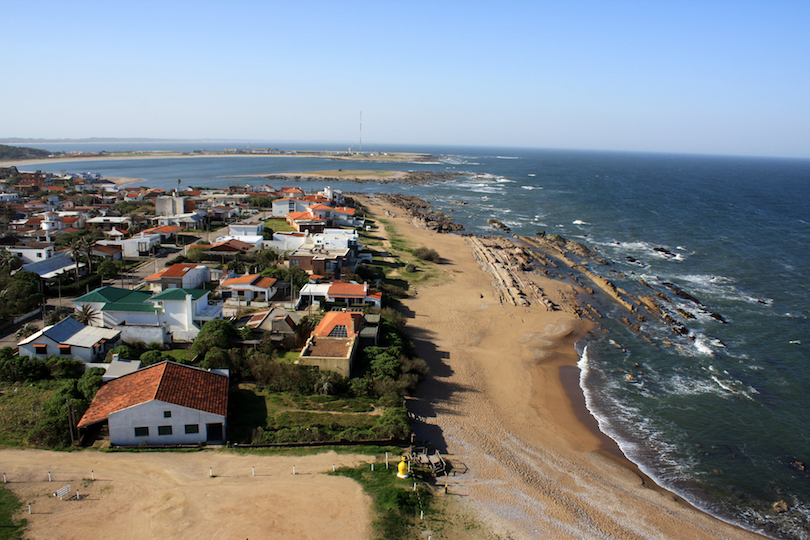
A small city, La Paloma lies on the coast of the Atlantic Ocean and is a popular summer beach resort amongst South Americans and Uruguayans themselves, who flock here to enjoy the sun, sea and sand. With spectacular beaches, this laid-back city is great to visit and there are lots of fun watersports for you to try out such as surfing, sailing and windsurfing.
One of the best beaches for sunbathing is Anaconda Beach, where watching the sun set over the ocean is absolutely divine. Perfect for those who are looking to kick back and relax, La Paloma’s remote location makes it ideal for a quiet and peaceful holiday by the beach.
9. Santa Teresa National Park [SEE MAP]
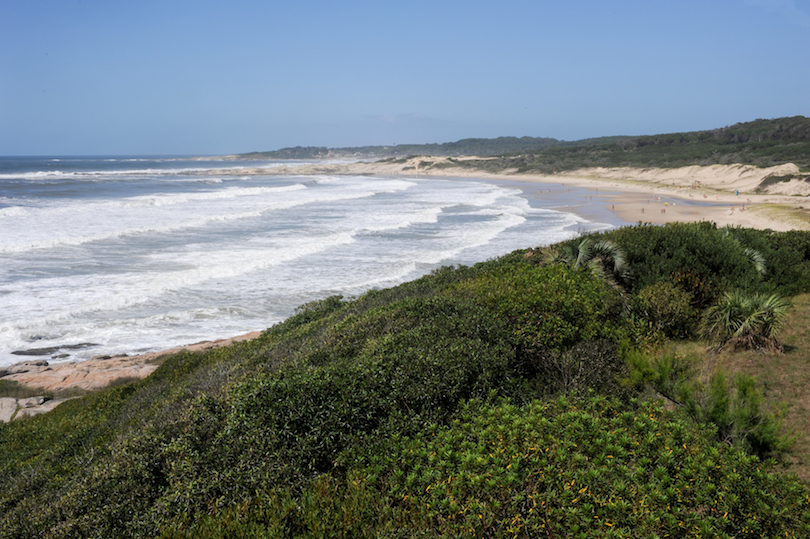
Bordering the laid-back Punta del Diablo is the marvelous Santa Teresa National Park which nature lovers will absolutely adore as it encompasses a diverse array of landscapes, ecosystems and fauna and flora. Much of the park is made up of lovely forests and seasides areas.
There are loads of great hiking trails that cut through the dunes and woods where visitors may catch a glimpse of some of the wildlife that resides within the park. It is actually here that a large battle took place when Uruguay was striving to win its independence.
One of the major historical sites here is the impressive Fortress of Santa Teresa which dates all the way back to 1762 and is located in between the wetlands in the park and the Atlantic Ocean. Definitely worth visiting, the nature and history on offer in Santa Teresa National Park will live long in the memory.
8. Punta del Diablo [SEE MAP]
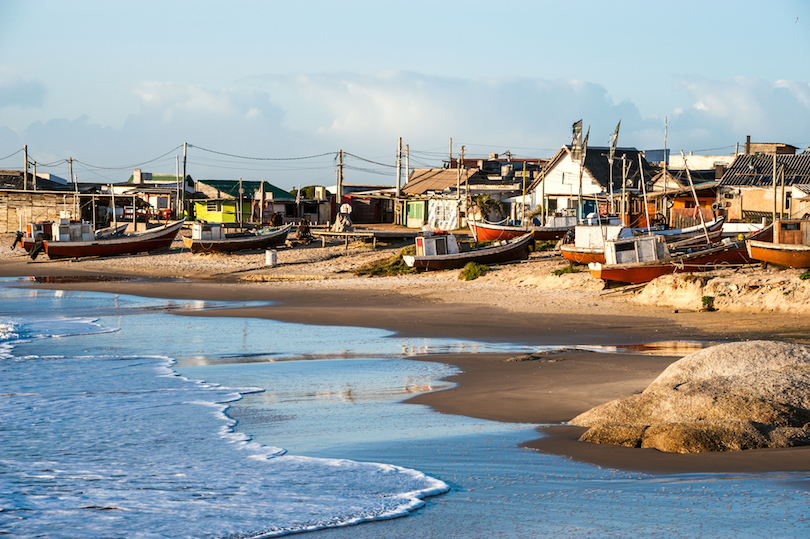
A popular place to visit among Argentines and Uruguayans looking to head to the beach and bask in the rays, Punta del Diablo is a lovely place to visit and despite recent development projects still has the feel of a picturesque and charming little fishing village.
With beautiful beaches and a laid-back way of life, it is a relaxing place to simply kick back and watch the world go by. As you can imagine, there is also some delicious seafood for visitors to enjoy.
With loads of outdoor activities on offer, you can be horseback riding over the dunes one minute, learning to surf the next and trying your hand at dune boarding later on in the day. Not far from Punta del Diablo are some fantastic nature reserves such as Santa Teresa and Cerro Verde, which are also well worth visiting.
7. Carmelo [SEE MAP]
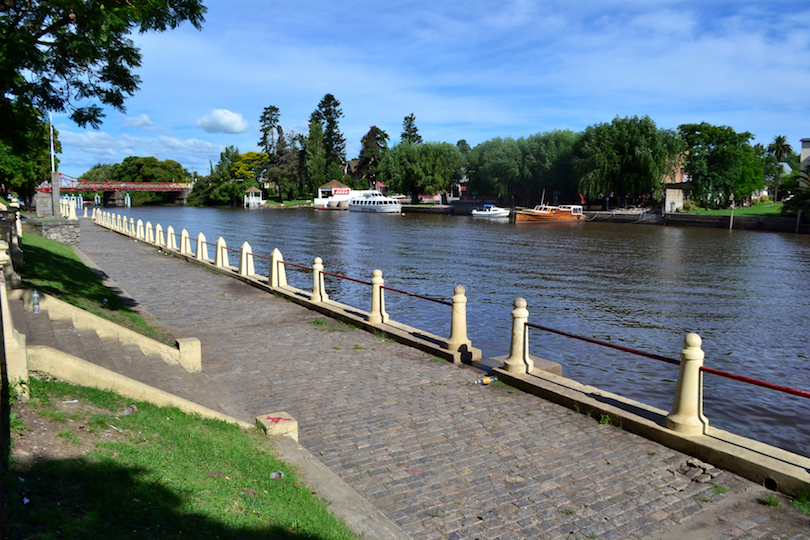
Located near the spot where the Rio de la Plata and the Rio Uruguay join, Carmelo is an increasingly popular tourist destination and with good reason, as it is dripping with charm, as wonderful old buildings and cobbled streets make up much of the town.
The waterfront is lovely to wander along and from here you can take boat trips to the magical Parana Delta which is fantastic to explore. There is also a variety of activities for visitors to check out such as fishing, yachting and other watersports.
With some lovely beaches, brilliant wineries in the surrounding countryside, and a casino to boot; Carmelo covers a wide range of bases and has something for everyone to enjoy.
6. Salto [SEE MAP]
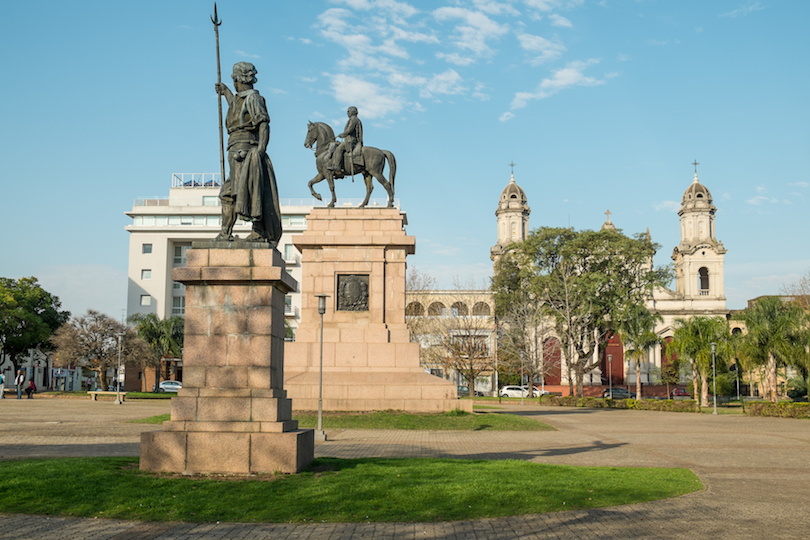
The second largest city in Uruguay, many people stop off here on their way to Argentina. This is certainly is a picturesque place as it borders the majestic Rio Uruguay. Salto is actually named after the falls which make a ‘big jump’ down near the city.
There are lots of lovely little riverside walks for visitors to enjoy, and the leafy streets and plazas delightfully combine with the wonderful architecture to make Salto a relaxing and laid-back city to visit.
In addition to this, there are soothing thermal springs at Dayman for you to unwind in. They are in stark contrast to the town’s huge hydroelectric dam which is bizarrely a popular destination for tourists.
5. Piriapolis [SEE MAP]
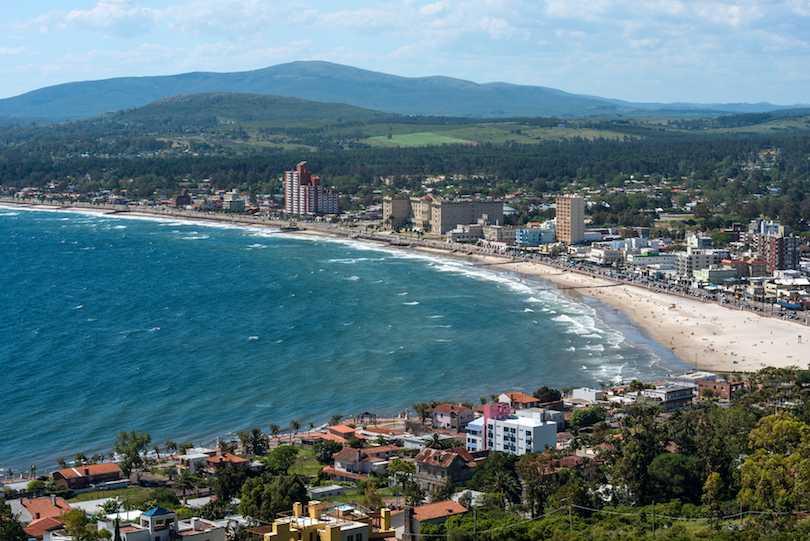
With a very Mediterranean feel to it, Piriapolis’ wonderful beaches are great for lounging on, and the long promenade that hugs the waterfront is perfect for relaxing strolls while taking in the sun and river views.
One of the most popular beach resort towns in the country, it was actually created for that reason and so has a number of great hotels, restaurants, bars, casinos and shops, particularly as you get nearer to the coastline.
While the waterfront Rambla is the most popular spot in the city, the delightful Pira’s Castle is well worth checking out, and the Hotel Colon is magical to behold. With lovely views of the coast on offer nearby, Piriapolis is a great spot at which to relax after a busy trip’s sightseeing.
4. Tacuarembo [SEE MAP]
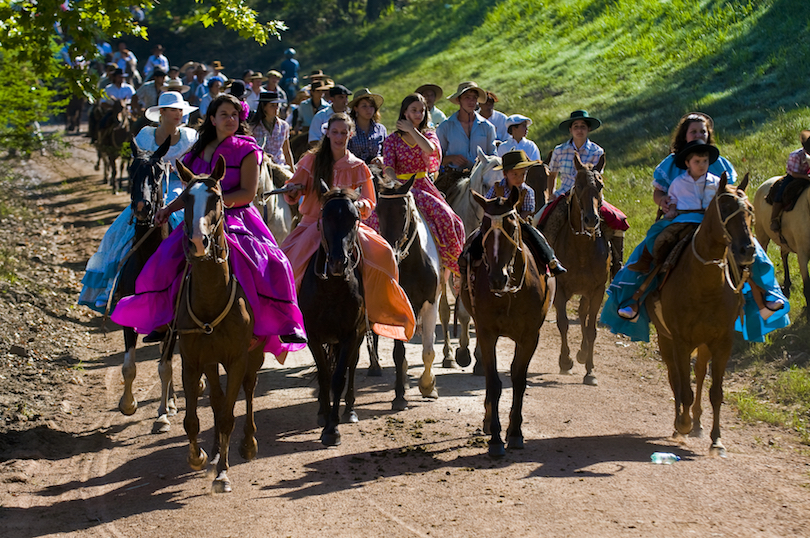
Located in the north of the country, Tacuarembo is as gaucho as they come and the rolling hills that surround the city are full of cattle and sprawling fields. As such, there is a distinctive cowboy feel about the place, and the culture, language and food here is very different from the rest of Uruguay.
With lovely leafy plazas and tree-filled avenues for you to enjoy, wandering around about town is a delightful experience. It is here that the legendary tango star Carlos Gardel is reputed to have been born.
The main sights on offer include a beautiful cathedral, the picturesque 19th of April Plaza and a couple of interesting museums, while the surrounding area has some nice waterfalls and grottoes for you to visit.
3. Punta del Este [SEE MAP]
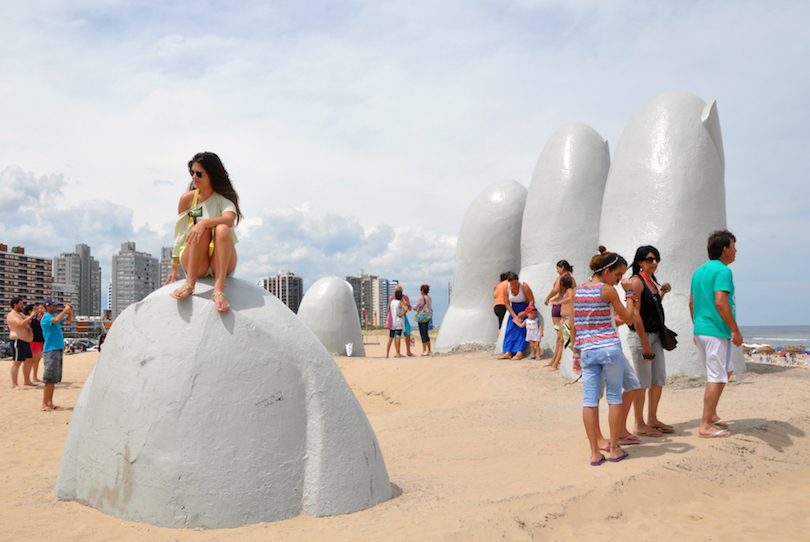
This upmarket beach resort town is so luxurious and fancy that it is often called the Monaco or Saint-Tropez of South America, where yachts, casinos and trendy cocktail bars abound in this playground of the rich.
With loads of bars, restaurants and clubs hugging the beautiful beachfront, it is a fun place to visit although it is quite expensive in comparison with the rest of the country.
The mansions along the seafront really need to be seen to be believed. Watching the sun go down over the ocean at either Jose Ignacio or La Barra is absolutely divine, and there are lots of great watersports for you to try and fantastic museums for you to visit. Alternatively, you can just lounge on the wonderful beaches and simply watch the world go by.
2. Colonia del Sacramento [SEE MAP]
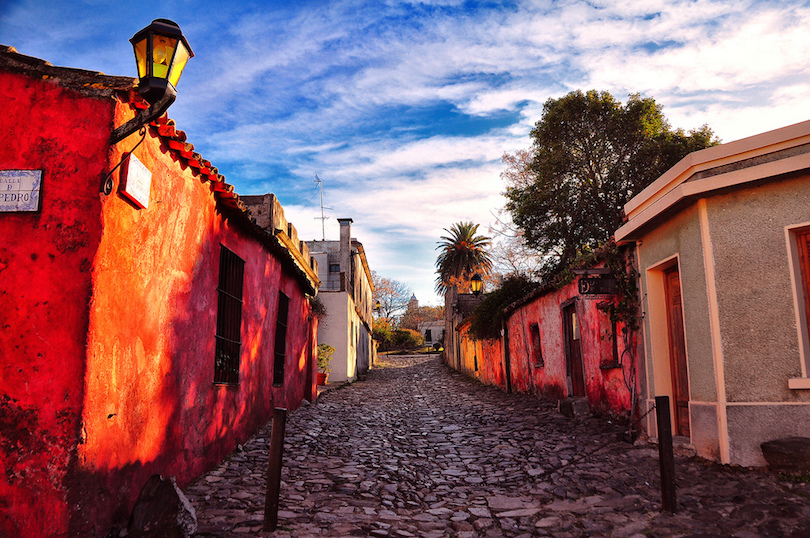
The historic quarter of Colonia del Sacramento is absolutely stunning to wander around as it is one of the oldest cities in Uruguay and wonderful colonial architecture and picturesque old cobbled streets are everywhere you look.
Having been ruled at various times by the Spanish and Portuguese who fought over it, there is an interesting mix of architectural styles. A city wall that once protected the city from invaders still runs around the old quarter. Lying next to the Rio de la Plata there some great museums for visitors to enjoy.
Two of the main tourist attractions are the towering lighthouse which offers up great views of the city, and the Basilica del Sanctisimo Sacramento which is wonderful to behold. A charming place to visit, Colonia del Sacramento is well worth checking out when you’re in Uruguay and there are lots of great restaurants and trendy boutiques to boot.
1. Montevideo [SEE MAP]
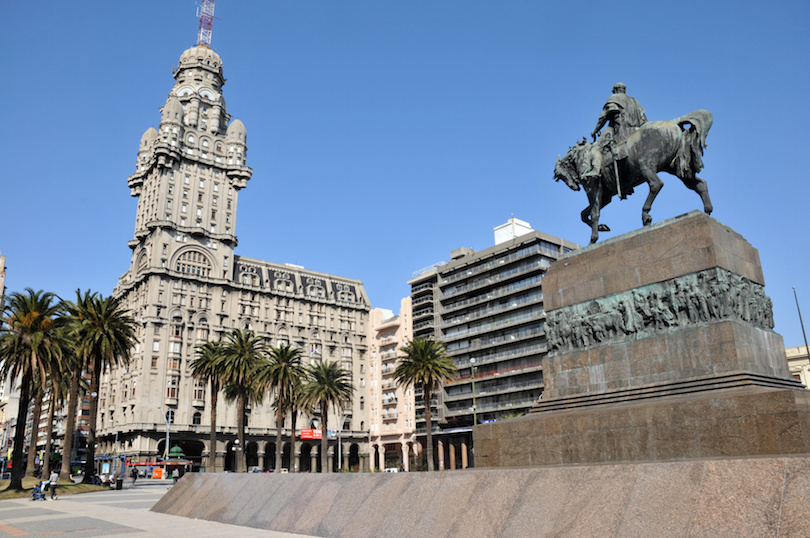
The capital of Uruguay, Montevideo is a fascinating place to explore, and visitors to the city invariably come away having loved everything that they’ve seen and done. Home to nearly half of the country’s entire population, it is a bustling place which is full of life, with loads of theaters, art galleries and music venues on offer.
In addition to the lively cultural scene, there is a happening nightlife, with lots of tango bars, trendy cocktail lounges and discos scattered about the city. As the capital of the country, Montevideo has something for everyone to enjoy and the historic downtown area is captivating to explore, with beautiful neoclassical buildings dotted about here and there.
The Teatro Solis which borders the impressive Plaza Independencia is particularly breathtaking to behold. For an authentic look at life in Montevideo, head to the Mercado del Puerto which is full of shops and restaurants selling delicious local cuisine. Then, go for a stroll along the scenic La Rambla which borders the bay. With beautiful beaches nearby and the stupendous Estadio Centenario for football fans to check out; Montevideo really does have it all.
Map of Uruguay
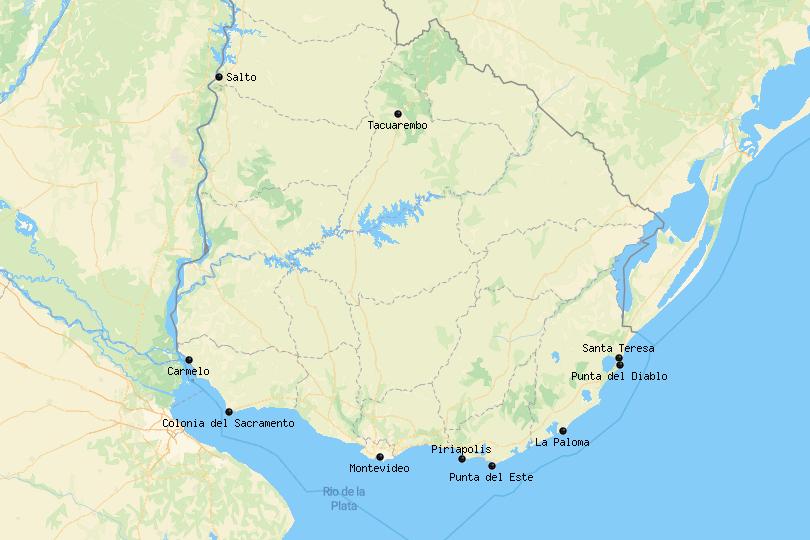
Share this post:
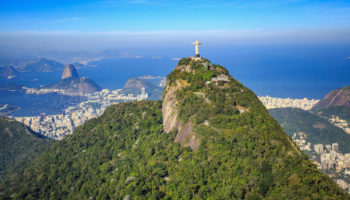
21 Best Places to Visit in South America

10 Top Tourist Attractions in Venezuela
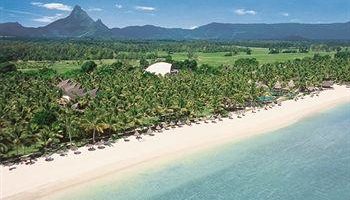
10 Best Mauritius Luxury Resorts

8 Best Mozambique Beach Resorts
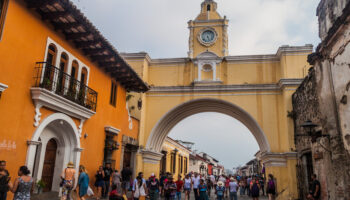
10 Best Places to Visit in Central America
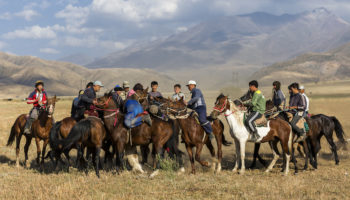
10 Best Places to Visit in Kazakhstan
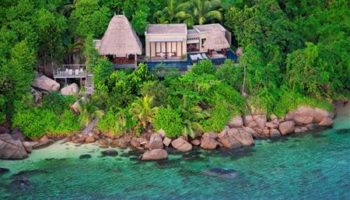
10 Best Seychelles Luxury Resorts
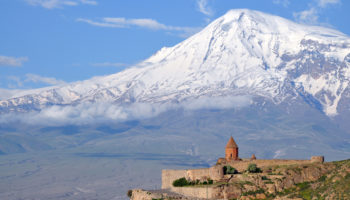
10 Best Places to Visit in Armenia

15 Best Things to Do in Mongolia

Taking on the 7 Waterfalls Hike in Juayua
Reader interactions, leave a reply cancel reply.
Your email address will not be published. Required fields are marked *
This site uses Akismet to reduce spam. Learn how your comment data is processed .

15 Top Tourist Attractions & Things to Do in Uruguay
Written by Diana Bocco Updated Jan 31, 2022
A small country with borders against Argentina and Brazil, Uruguay was colonized by the Spanish and Portuguese in the late 17 th century–a lot later than neighboring countries. Although the country was originally inhabited by the Charrua people, little of the native indigenous culture survives today.
The country did adopt a number of traditions and celebrations connected to African heritage–a result of the presence of African slaves in the country in the 19 th century–especially evident during the celebration of the Carnival at the beginning of the year.
For those visiting, Uruguay has much to offer in the form of great cuisine, unexpected traditions, and plenty of natural attractions to explore and discover. For details on the best places to visit, take a look at our list of things to do in Uruguay.
1. Explore Montevideo
2. mix with the jet set in punta del este, 3. sunbathe and swim at the many beaches, 4. discover the past in colonia del sacramento, 5. try a south american bbq, 6. hike in punta del diablo, 7. spot sea lions in cabo polonio, 8. relax in hot springs, 9. see candombe during carnival season, 10. discover gaucho culture, 11. discover the "other" home of tango, 12. explore historical sights, 13. spot whales from the beach, 14. explore the dunes of josé ignacio, 15. explore wetlands and secret lagoons.
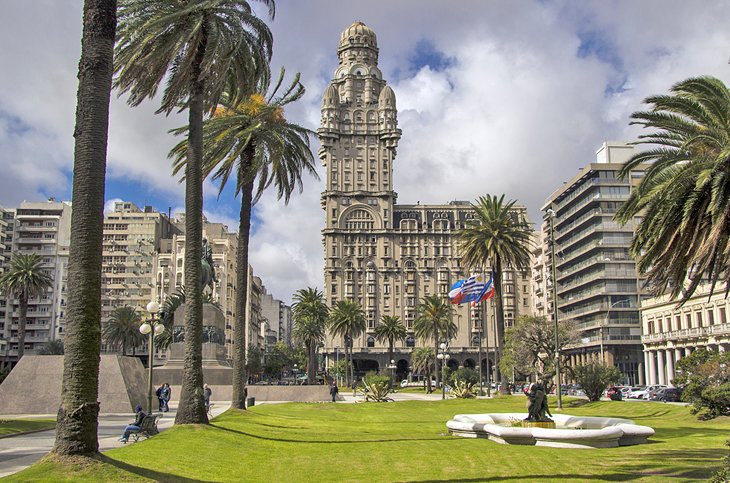
Uruguay's capital city is an eclectic mix of Neoclassical and colonial architecture, African influences, and modern European flair. Government buildings, including Palacio Salvo (home to the Tango Museum of Montevideo ) and the Legislative Palace (made up of almost 30 different types and colors of marble) are a good representation of the look and feel you'll experience when walking the streets of Montevideo.
Ciudad Vieja , the oldest part of the city and now a beautiful neighborhood, holds several landmarks, including the Citadel Gate (the only remaining part of the walls that once surrounded the city) and the green square Plaza Independencia .
Montevideo is a happening city with world-class cuisine you can experience at its best in the Mercado del Puerto ("Port Market").
Montevideo's cultural heritage is well represented in the city's many history and art museums, including the large National Museum of Visual Arts and the Museo Torres García , dedicated to the renowned Uruguayan avant-garde sculptor, painter, and writer.
Montevideo's beaches and Rambla (a coastline sidewalk) attract tourists from many neighboring countries.
Read More: Top-Attractions & Things to Do in Montevideo
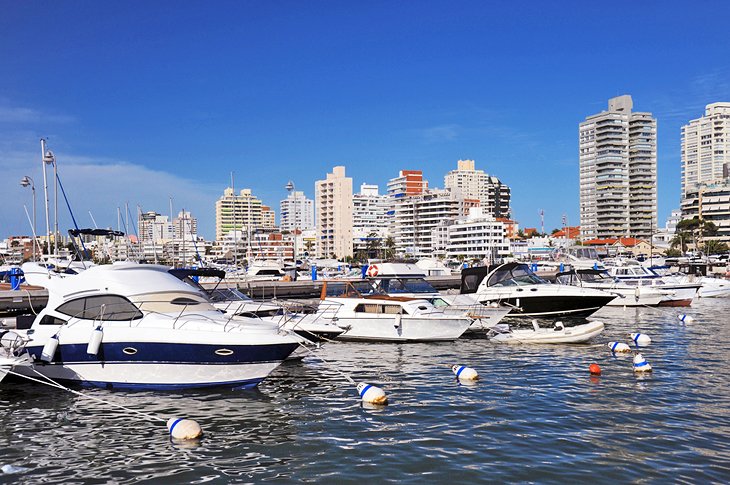
Punta del Este is Uruguay's most famous beach , and it deserves a mention because it has often been called "the Monaco of the South"–a resort area where models, actors, and the rich come to relax, play, and enjoy haute cuisine.
Punta's main tourist attraction is, without a doubt, its coastline of fine golden sand and water sports, but the area is also home to a significant population of southern right whales; an imposing hotel complex; and the Museum of the Sea , which showcases everything from whale skeletons to a collection of early 20 th -century bathing suits.
Isla de Lobos and Isla Gorriti are two small islands off the coast of Punta del Este. They are home to a lighthouse, ruins of Portuguese forts, and large colonies of southern elephant seals and orcas . Isla de Lobos is a nature reserve and a wintering area for whales .
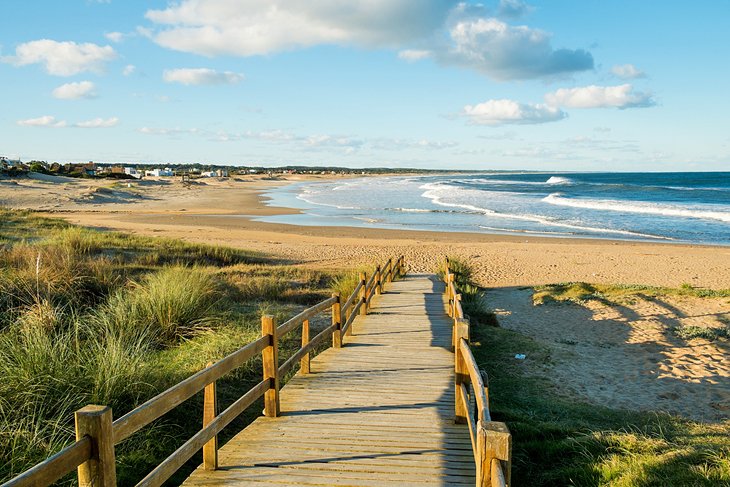
Uruguay's coastline doesn't come with palm-fringed, golden sands or turquoise waters, but this small South American country still has lots of beautiful, pristine coastal destinations for sun lovers, with plenty of waterfront promenades, resorts, and boating areas.
While Punta del Este beach attracts the rich and famous, it also comes with higher prices, larger crowds, and a lively atmosphere that makes it hard to enjoy a quiet moment in the sun during high season. If you're looking for a little more peace, there are many other beach destinations in Uruguay that are a better option. The country's capital, Montevideo, has a number of beaches, including the upscale Playa de los Pocitos , which offers plenty of water sports, and the beaches alongside the 22-kilometer-long Rambla.
Piriápolis , one of the oldest beach resort areas in Uruguay, attracts mostly surfers and history lovers with its strong waves and its Belle Epoque-style buildings.
Costa de Oro (Golden Coast) is the longest stretch of beach in the country, covering over 45 kilometers of wide sandbanks that are underdeveloped and ideal for a quiet escape.
Read More: Best Beaches in Uruguay
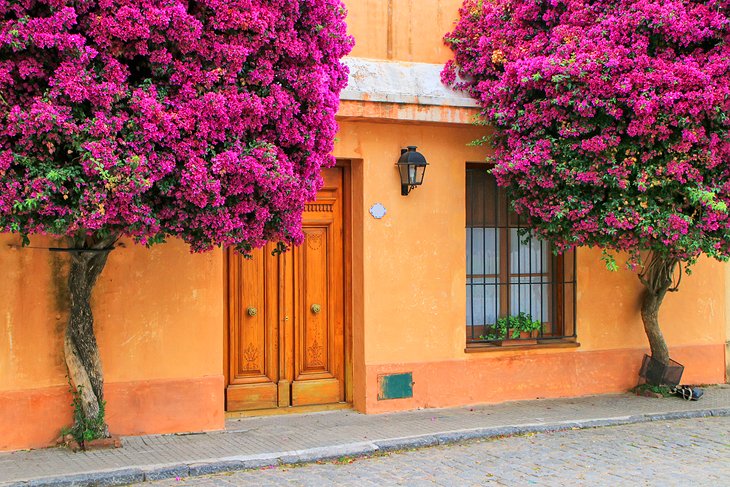
Best known as just Colonia, this small city is also one of the oldest in Uruguay. Colonia's Barrio Historico or old town center is a UNESCO World Heritage site and the town's main attraction.
Set around a tree-lined square and surrounded by cobblestone streets, the barrio is home to a number of historical buildings and ruins, including a 17 th -century convent; a municipal museum showcasing artifacts about the history of Colonia; a wooden drawbridge; and the Basilica of the Holy Sacrament, which was built by Portuguese settlers in the early 19 th century.
The ruins of the bullring Real de San Carlos (abandoned since bullfighting was banned in Uruguay in 1912) and the lighthouse against the river are also famous landmarks.
Colonia is also a great place to catch the ferry to Buenos Aires . The ferry departs from Colonia over 40 times per week, and the trip takes just one hour and 15 minutes, making for a perfect sightseeing day trip to the Argentinian capital.

Uruguay's parrillas (steakhouses) are a meat lover's dream. The quintessential Uruguayan dish is the "asado," a sort of open-fire barbecue that is more a social event than just a meal. An asado can consist of any non-marinated meat (though beef and chicken are the main choices).
Asados often consist of several cuts of meats that cook at different times, so they can be served one after the other. Asados are usually served with baguette bread grilled next to the meat, as well as grilled vegetables, and salads.
Unless you're a vegetarian, sitting down to try an authentic asado is a must when visiting Uruguay. There are plenty of parrillas around the country, with places like La Pulperia (in Montevideo) and Punta Salina (in Punta del Este) often making the top 10 lists of restaurants in the country.
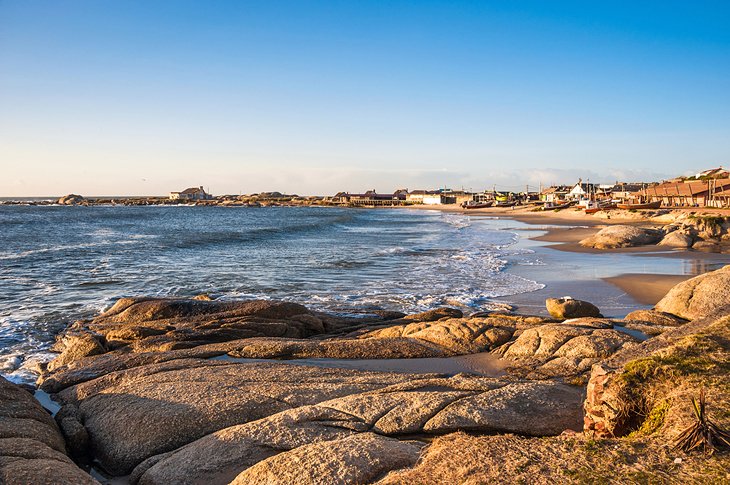
A sleepy village of about 1,000 residents, Punta del Diablo swells up to an impressive 25,000 residents during the high season (December to February), when visitors come here to enjoy a quiet escape in a fabulously untouched area of soft sands in the Atlantic coast.
Punta del Diablo (Devil's Point) is an hour and a world away from Punta del Este–but it still offers plenty of high-end cuisine, shops, and accommodations overlooking the rocky waters.
Strict building codes mean no large building projects or major developments are allowed here, so all you see as you walk through the town's wide-open streets are brightly colored cabañas (cabins) and small shops selling local crafts and souvenirs.
Early morning treks on the sand dunes are a favorite activity here, but more adventurous explorers can leave the village and venture all the way to Santa Teresa National Park , a forested seaside reserve, home to an 18 th -century granite masonry fortress; a large campground; a number of protected species; and several beaches, such as Playa del Barco and Playa Achiras , where chances for surfing and windsurfing attract many visitors.
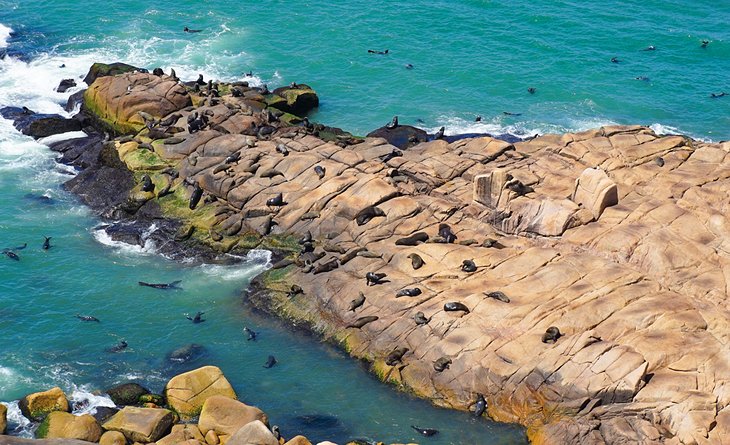
When it comes to off-the-beaten-track destinations, it doesn't get any more off the track than this tiny hamlet, where there's no electricity, no running water, and no Wi-Fi–and that's exactly how the local residents want it.
Cabo Polonio has a population of under 100, people who live in rustic but pretty small cabins and houses. There's one store in town, a few posadas (rustic inns that accommodate summer visitors and offer meals by candlelight or oil lamps), some shacks selling surprisingly great food, and a lighthouse that is the only building connected to the power grid. And all this in a beautiful, rugged area, where grassy sand dunes and giant boulders wash into the cold sea.
Getting to Cabo Polonio is part of the adventure, as there are no roads into town. The only way to access the village is either in a 4WD vehicle or by hiking seven kilometers from the highway over slippery and ever-changing sand dunes.
The deserted beaches around the village are home to one of the largest colonies of sea lions in South America .
Termas (hot springs) are fairly popular in Uruguay, with Termas del Arapey and Termas del Dayman. Arapey is the oldest thermal resort in the country, with natural spring waters that reach 39 degrees Celsius and are supposed to have therapeutic properties. The area is popular with tourists and offers plenty of green spaces; holiday cottages; and chances to swim in cooler, more comfortable waters any time you want.
The Dayman hot springs are located next to the river Daymán and have a maximum temperature of 46 degrees Celsius. Daymán is better developed, with seven pools for adults and three for children at varying temperatures, as well as food areas, tennis courts, and mini golf.
Uruguay's first water park, Acuamania , is located just minutes away from Dayman hot springs and offers a 300-meter-long lazy river, different slides, cold geysers, thrill rides, and interactive water games.
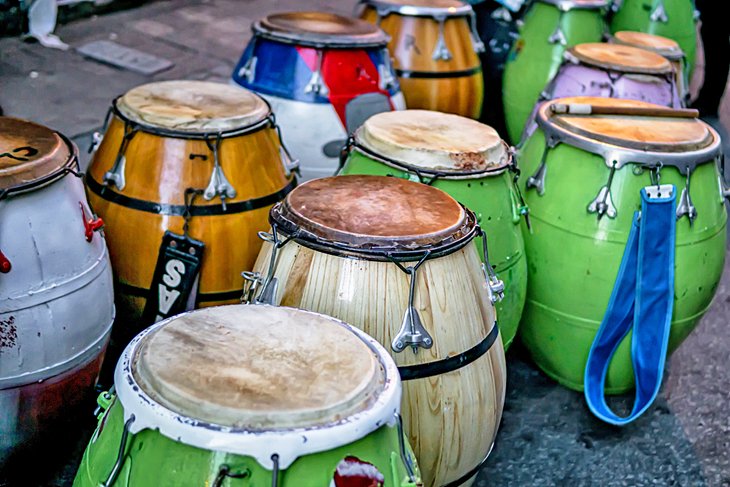
The carnival season is a major celebration that takes place in several South American countries, although how the festival is celebrated varies significantly from country to country.
In Uruguay, the carnival is a time for dance parades, where comparsas (groups of dancers and drummers) take to the streets to play candombe, a traditional form of musical experience closely related to the music and dance styles brought over by African slaves.
Montevideo has the biggest carnival celebrations, with parades and cultural events lasting 40 days between January and February, making it the longest carnival celebration in the world . During this time, dancers take to the street in colorful, over-the-top dresses to celebrate well into the early morning.
Murgas, a type of drumming musical theater, are also a major part of Uruguayan carnivals. They usually perform parodies based on current events as they move along through the city streets.
If you're going to be in Uruguay during carnival season, make some time to visit the Carnival Museum in Montevideo, where you can learn about the history of the carnival, its origins, and how costumes and celebrations have evolved through the years.
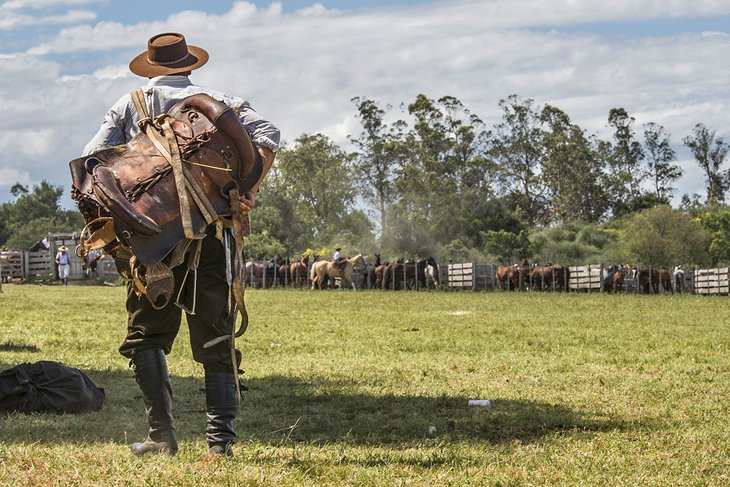
The gaucho (a sort of South American cowboy) is a national symbol in Uruguay and Argentina. Historically, gauchos were brave explorers who took over livestock farming in remote regions and became master horse riders.
While the traditional gaucho is technically extinct, the traditions associated with these brave country men live on and are an integral part of the culture of Uruguay. An example of this is the popular mate, a traditional drink served in a hollow gourd, that you should definitely try when visiting Uruguay.
For visitors wanting a glimpse into gaucho culture, visiting a hacienda is a good start. These large landed estates offer accommodations, traditional local food, and a chance to either watch or participate in traditional gaucho activities such as driving cattle, herding sheep, and horse riding.
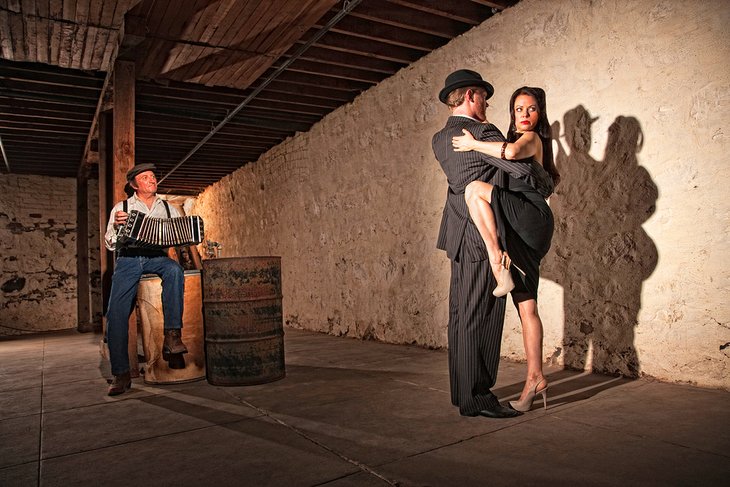
Tango is just as Uruguayan as it is Argentinian (the country that is most commonly associated with it), but its origins are different. In Uruguay, tango was born in the 1880s in Montevideo and it was, for a long time, an underground dance favored among the poor and working class. Today, Uruguayan tango is best known for giving the world the 1916's tango "La Cumparsita," popularly referred to as Uruguay's national anthem.
You can often spot tango dancers on the streets of Montevideo, and the Viva el Tango festival takes over the country every October. But you can also search for milongas (tango salons) if you're up for doing more than just watching. Most of these places offer tango classes plus a space to just come and dance if you already know what you're doing.
During the summer, you can join milonga callejera (basically, street tango dancing) at places like Plaza Liber Seregni in Montevideo.
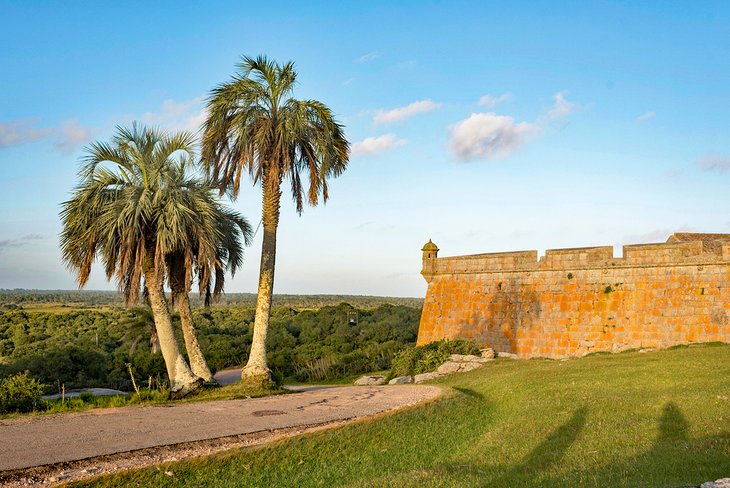
Uruguay is a relatively new country. It wasn't discovered by Europeans until 1516, and Montevideo wasn't even founded until 1726. As a result, the extent of its historical places is mostly limited to fortresses and towers – but Uruguay has some impressive ones to showcase.
Fortress General Artigas, also known as Fortaleza del Cerro, sits 134 meters above sea level overlooking the Bay of Montevideo. It was built in the 1800s by a Spanish governor, and today it's a popular lookout point. It also houses the Military Museum.
The extensive Fortress de Santa Teresa was originally built by the Portuguese (looking to defend themselves against a potential Spanish attack) in the 1760s but fell into ruins over the decades. Fuerte San Miguel – located within the San Miguel National Park – is in much better condition, and it now houses a collection of military uniforms, weapons, and everyday objects from colonial times.
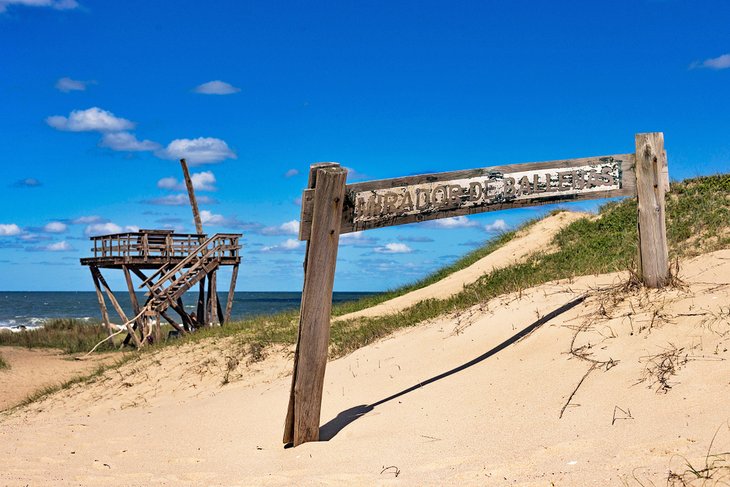
Southern right whales make their way to South America to breed between July and November. While you can certainly catch a boat if you want to get closer to them, you'll get plenty of sightings right from the beach in areas where the water is very deep.
Uruguay's Atlantic Coast has plenty of strategic viewing points at Punta Colorada and Punta Negra beaches, the Punta del Este area, and the bay at La Paloma. There are also several observation towers dotted along the coast, including one in the city of Punta del Este and one in the seaside forested area of Parque Santa Teresa.
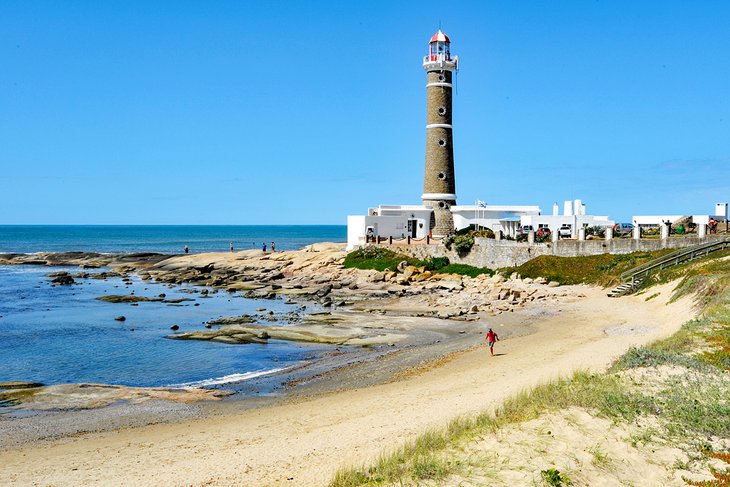
About 40 kilometers east of flashy, loud Punta del Este, the tiny town of José Ignacio (only 200 people live here year-round) has become the must-visit place for luxury-meets-relaxation. Just a few decades ago, José Ignacio was a fishing village not many had heard about. Today, it's a sought-after spot for everything from high-end beachfront restaurants to yoga studios and stunning boutique hotels mostly run by Europeans.
During the summer, José Ignacio welcomes beach lovers, surfers, and whale watchers, and the town is alive with the sounds of Carnival and late-night restaurants by the shore. Horse-riding on the beach, strolling down the dunes, and windsurfing are equally amazing things to do no matter when you arrive.
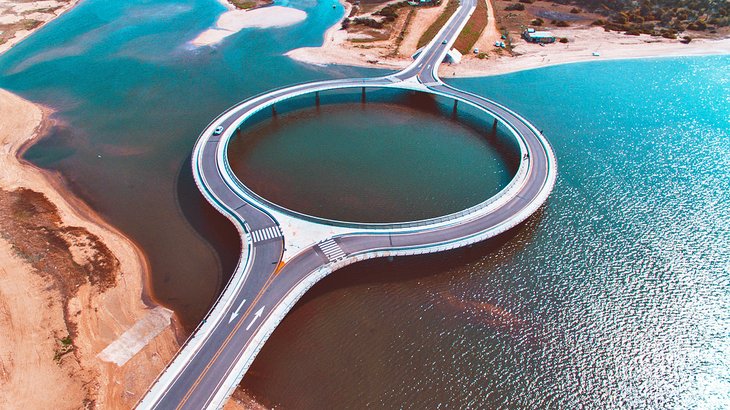
Uruguay might be South America's second-smallest country (just barely bigger than Suriname), but that doesn't mean it's lacking when it comes to natural spaces. And while there are also plenty of areas covered in forests, canyons, and subtropical forests, the country is best known for its lagoons and wetlands.
Perhaps the best-known is Laguna Garzón, set on the side of the famous circular bridge of the same name. The protected area is home to migrating birds and is a great whale-spotting destination just one hour away from Punta del Este. Laguna Merín near the border with Brazil is surrounded by wetlands and rolling sands, while Laguna de Rocha is a bird lover's paradise and home to many unique animals such as capybara.


Home » Travel Guides » 15 Best Places to Visit in Uruguay
15 Best Places to Visit in Uruguay
Uruguay has always lived in the shadows of Brazil and Argentina , it’s bigger and faster neighbours. But in recent decades, this little country is finally getting some of the recognition it deserves.
It’s everything you want a holiday country to be: progressive, culturally sophisticated, stable, jam packed with nature and outdoor adventure, and accessible. Because it’s not yet heavy on the tourist circuit, you’ll get lots of “local experience,” which comes with great memories and stories to retell back home.
Come and discover for yourself why it’s called the Switzerland of South America. Here’s the best places to visit in Uruguay !
1. Montevideo

Montevideo is the seat of the nation’s capital and home to almost half of its population. This eclectic own is high on fun and steeped in cultural life. There are lots of different aspects to discover here.
Start with the historic downtown where you’ll find neoclassic buildings right next to towering skyscrapers. You can visit the port and industrial side, spending the day shopping, or check out the beach communities of places like Pocitos and Carretas.
In the evening enjoy theatre, galleries, and concerts. You’ll love the tango bars and seaside discos. Be sure to check out La Feria Tristán Narvaja flea market, The Rambla, and Plaza de Independecia.

Salto is the country’s second biggest city and is named after the point where the Rio Uruguay makes a “big jump.” People make their way here for the hot springs and the outdoor activities offered.
You’ll find a pretty riverfront town that’s relaxed and lets you easily unwind. Oddly enough, the town’s hydroelectric dam, located 2ok from the city, is a very popular tourist site.
Check out the hot springs at Daymán which has three pools of varying temperatures, different showers and fountains, and great area to enjoy a picnic lunch.
3. Paysandú

The third-largest city is Paysandú and it’s joined to Colón, Argentina by the Puente Internacional General Artigas.
Founded as an outpost for cattle herders in the regions, the town has grown to be the source of most of the meat for all of Uruguay. These days, the action is on Plaza Constitución so plan to spend an afternoon strolling around.
If you time it right, you can join in the city’s annual week long beer festival and see a wilder side of laid-back Paysandú.

Filled with low old houses and cobblestone streets, Carmelo is the place for stress-free water activities. Fishing, yachting and exploring the Paraná Delta are the major pastimes here.
Situated near the convergence of the Rio Uruguay and the Rio de la Plata, there’s a lovely sheltered harbour here. Cross the bridge to Playa Sere beach with great space for camping in the adjoining park.
Bring some extra cash on hand to enjoy the casino.

Chuy sits on the Atlantic coast in Uruguay and right across the street is its twin sister Chui, in Brazil. The main street between these two towns is the actual border between Brazil and Uruguay.
Half the town will call out, “Bienvenido,” as you pass, and the other half will say, “Bem vinda.”
Don’t miss Fuerte San Miguel, an 18th century fort integral in the formation of Uruguay as an independent country, and Fortaleza de Santa Teresa, a National Historic Monument located in a national park.
6. Colonia (Colonia del Sacramento)

Founded in the 17th century, Colonia is now designated as a UNESCO World Heritage Site. You’ll love the old colonial buildings and cobblestone streets that provide so much character.
The city itself was, for a long time, a smuggling port and changed hands several times between the Portuguese and the Spanish. As you’d imagine, the main attraction is the old historic centre. There are eight small museums here (all for the price of one ticket). The town lighthouse provides a lovely view of the city and the river.
Visit the abandoned Basilica del Sanctísimo Sacramento, an old bullfighting ring and enjoy some of Colonia’s asado, a favourite among the locals.

Situated on the Yi River, Durazno is a small town originally built in the 19th century and named after the Brazilian Emperor Pedro I.
There is a great regional art museum, Casa del General, with exhibits on Uruguayan archaeology, Gaucho art, and local history. Sports fans will enjoy the local sports museum and kids will love the Durazno zoo.
There’s also the wonderful Iglesia San Pedro De Durazno, designed by well-known architect Eladio Diesde.
8. Punta del Diablo

This old timey fishing village is now the number one summer getaway destination for Argentines and Uruguayans. It’s also the heart of the backpacker scene in Uruguay.
There’s been a lot of development recently, but the town hasn’t lost its charm. Another fantastic town with a gorgeous coastline and laid-back atmosphere, you’ll love this little corner of the country.
Be sure to check out the sandy plaza, located about 200m inland. Small sandy streets fan out in all directions.
9. Punta del Este

This beach resort town has everything: sand, yachts, casinos, and sun. Sometimes called the Monaco of South America, Punta del Este is a bit expensive compared to the rest of Uruguay, but the amazing coast, activities, restaurants and more make it a must see town.
Don’t miss sunset in either Jose Ignacio or La Barra and the surfing in La playa de los Dedos. There’s some great beach art here as well. You’ll love gawking at the seaside mansions and walking along the tree-lined an idyllic streets.
There’s also a museum, Casa Pueblo, created by Carlos Paez-Vilaro. As well as the Pablo Atchugarry Foundation, the Museo del Mar (marine museum), the Museo Ralli (contemporary art museum), Arboretum Lussich, and Isla de los Lobos – the largest seal colony in the southern hemisphere.
10. Piriápolis

There is a definite Mediterranean vibe in Piriápolis. There’s a beachfront promenade and a wonderful old hotel. Created specifically for tourism at the beginning of the 20th century, it includes the Castillo de Piria (Pira’s Castle) and the Argentino Hotel.
There’s a ten block area of coastline where you’ll find the shopping, restaurants, and water sports.
Though most of Uruguay is quite flat, there are lovely views here of the surrounding area – with two of the country’s highest peaks nearby.
11. Tacuarembó

This is gaucho country. The rolling hills of Cuchilla de Haedo serve as the backdrop for this rugged cattle country. The supposed birthplace of the tango legend Carlos Gardel, you’ll find attractive plazas, tree lined streets, and the quaint Plaza 19 de Abril in the heart of the town.
Be sure to visit the Museo Carlos Gardel, the Gruta de los Helechos, the Catedral de Tacuarembo, the Museo del Indio y del Gaucho Washington Escobar, and the stunning Pozo Hondo, a grotto and waterfall just outside of town.
Everyone falls in love with the culture, language, and cuisine of Tacuarembo that all seem to be influenced by just about everywhere.
12. Cabo Polonio

There’s no water, sewage, or electricity in Cabo Polonio, making it a big attraction for the hippie and backpacker crowds.
The entire area is a natural reserve complete with a forest of Ombu trees, and a nearby colony of sea lions behind the picturesque lighthouse. The main reason to come here is to relax on the beach and unwind from all your travels.
Remember to bring real books with you if you plan to relax on the beach – recharging your e-reader will be a challenge!

Rocha is where you’ll find the last of the vast pristine beaches of Uruguay. The sand is white, the ocean a bright blue, and the beach is basically deserted.
The entire department has very little development but the feeling of remoteness is greater than reality. The place is still quiet accessible.
More and more ex-pats are discovering a retirement paradise in Rocha.
14. Nueva Helvecia

There is a deep sense of community in Nueva Helvecia. The town square, a favourite hangout spot for locals, was specifically designed for people to come together. You’ll find everyone in town spends at least a little time here every day. The elders of the community can be counted on to tell stories from the old days.
There’s an incredible Founder’s Monument here that commemorates the immigrants who laboured and sacrificed to build Nueva Helvecia. Made out of granite, it’s a fantastic tribute to this cosy community.
There are also great festivals here. In August enjoy the Swiss Festival where you can sample Swiss dishes, signing, and dancing. Some families go all out in creating incredible Swiss cheese fondues for everyone to sample.
15. San Gregorio de Polanco

Come to San Gregorio de Polanco for fresh clean invigorating air, lush flora, and blue water. This is a rather isolated area, which completely adds to its charm.
There are roughly 3,000 inhabitants here and it’s truly a natural paradise. You can visit the local visual arts museum, the delightfully decorated OSE water tank, and the local parish which has an art gallery inside.
For such an isolated area there are plenty of water activities on offer as well as amazing fishing.
15 Best Places to Visit in Uruguay:
- Colonia (Colonia del Sacramento)
- Punta del Diablo
- Punta del Este
- Cabo Polonio
- Nueva Helvecia
- San Gregorio de Polanco

21 Best Things to Do in Uruguay For Travelers
Wondering what to do when you travel to Uruguay? The information will be in your hands with just a few mouse clicks. Yes, there are a lot of fun things to do in Uruguay.
Uruguay, which borders Argentina to the west and Brazil to the north, is a small, vibrant nation with a rich history and distinctive cultural heritage. The country is renowned for its beautiful beaches, world-class surf, and passion for soccer, offering visitors a variety of must-do activities and experiences.
Hopefully, this article’s summary of the best things to do in Uruguay will spur you into action and get you started on your Uruguayan adventure.
Table of Contents
21 Things To Do in Uruguay
1. explore the magnificent city of montevideo.
The cultural heritage of Montevideo is strongly reflected in the city’s several history and art institutions, such as the National Museum of Visual Arts and the Museo Torres Garcia.
Tourists from numerous surrounding nations visit Montevideo’s beaches and the Rambla (a coastal walkway). As Montevideo is one of the safest cities in South America , it’s the perfect jumping-off point to explore more of Uruguay or continue your travels to either Brazil or Argentina.
2. Visit the Plaza Independencia

The Plaza Independencia is the heart of Montevideo , featuring the famous statue of Artigas, and is surrounded by historic landmarks and cultural institutions.
It is a historic and cultural hub in Montevideo, offering a blend of history, art, dining, and people-watching. Explore its significance, dine on local cuisine, and enjoy events and markets, all while taking in the vibrant atmosphere of the city center.
3. Visit Punta del Diablo
Punta del Diablo, also known as the Devil’s Point, is an hour away from Punta del Este . This small town has an abundance of upscale restaurants, boutiques, and lodgings with views of the rough waters.
Early morning treks are a popular pastime here. Explorers can also leave the village and journey to Santa Teresa National Park, where they may enjoy the beautiful natural landscape and encounter various protected species.
4. Take Some Snaps at La Mano de Punta Del Este
“La Mano de Punta del Este” (The Hand of Punta del Este) is a monumental sculpture that has become Punta del Este’s most recognizable landmark. It displays one hand’s fingers protruding through the sand. It was created in 1982 by the Chilean artist Mario Irarrázabal and is known as “Man Emerging to Life.”
5. See the Sea Lions in Cabo Polonio

Cabo Polonio is a small town with fewer than 100 individuals. There are no roads into town, so getting to Cabo Polonio is an adventure. The only way to settle is with a 4WD vehicle or trekking seven kilometers through slick, ever-changing dunes from the highway.
The beaches around the settlement are home to one of South America ‘s largest populations of sea lions. You can visit this region and have a once-in-a-lifetime experience of sighting sea lions in their natural habitat.
6. Visit the Unexplored City of Salto
On the eastern coast of Uruguay near Concordia, Argentina is the city of Salto. It is a very gorgeous and tranquil city throughout the entire year.
You can visit the adjacent Termas del Arapey thermal springs, which maintain an ideal temperature and offer curative effects. The city is replete with picturesque squares, making it ideal for photography. Be sure to visit the zoo, as it contains over 150 species of animals.
7. Refresh Your Eyes at Lussich Arboretum
It is reported that Antonio Lussich, a shipowner, commanded his captains to bring seeds back to his home during their journeys. These seeds grew in the area now called the Lussich Arboretum, which is brimming with semi-tropical and temperate plants.
Several routes lead to observation platforms from where you can see the scenery. In addition to the actual arboretum, the residence has been converted into a museum, with its collection of blue mosaic tiles serving as the centerpiece.
8. Try the Uruguayan BBQ

The parrillas (steakhouses) of Uruguay are a meat lover’s paradise. It is a type of open-fire barbeque that is more of a social gathering than a meal. Asado is the typical Uruguayan food served here. With chicken and beef as the main options, this dish can be made without marinating the meat.
Asados often comprise multiple meat slices that cook at different rates, allowing them to be served sequentially.
9. Explore the Colonial Town of Colonia del Sacramento
A UNESCO World Heritage Site , the beautiful town of Colonia del Sacramento is a well-preserved example of colonial architecture, with cobblestone streets, historic buildings, and a picturesque waterfront.
Visiting Colonia del Sacramento is perfect if you enjoy walking around and taking pictures. Being only a short ferry ride from Buenos Aires, it makes the perfect day trip from Argentina.
10. Take a Tour of Uruguay’s Many Vineyards and Wineries
Uruguay is known for producing excellent wines, and visitors can take tours of the country’s many vineyards and wineries to taste and learn about these wines. Journeying through Uruguay’s wine regions, including Canelones, Durazno, and Mandolado, reveals stunning landscapes and a vibrant culture permeating local cuisine and wine.
For those seeking to bring a piece of Uruguay’s wine heritage home, many wineries offer the opportunity to purchase wine bottles directly from the producers during your visit.
11. Visit Santa Teresa National Park
Santa Teresa National Park is home to some of the state’s most magnificent beaches where visitors may swim and surf. The park contains wooded areas and campsites as additional attractions for outdoor enthusiasts. There is even a nature reserve where you can observe local species if you keep your eyes peeled.
12. Visit the Casa Pueblo Museum in Punta Ballena
Casa Pueblo Museum is dedicated to the work of the most famous Uruguay painter, Carlos Páez Vilaró, featuring a collection of his paintings, sculptures, and ceramics.
It’s heaven on earth for art enthusiasts in Punta Ballena.
13. Visit Punta del Este
Punta del Este, renowned for its beaches and nightlife, is the place to go for a little sun, a little tan, and a little kilombo (parties).
Punta del Este is a popular vacation destination for Brazilians and Argentines, and many celebrities have also been spotted visiting this beach.
14. Relax at the Hot Springs in Termas de Almirón Inmotur
There may be endless fun activities in Uruguay, but everyday excursions can be physically taxing. Occasionally, soaking in hot water may just be what the doctor ordered to alleviate sore muscles.
The Termas de Almirón Inmotur has three saltwater swimming pools (indoor and outdoor), making it a perfect spot for relaxation. In addition, there is a freshwater pool with room-temperature water.
15. Visit Some of Uruguay’s Awesome Beaches
The Uruguayan city of Montevideo boasts several beaches, notably the posh Playa de los Pocitos, which provides many water activities, and numerous beaches along the 14-mile-long (22 kilometers) coastal Circuit.
Piriápolis, among the oldest beach resorts in Uruguay, mostly attracts surfers and history buffs with its powerful waves and Belle Époque-style architecture.
Costa de Oro (Golden Coast) is the longest beach in the country, spanning over 28 miles (45 km) of vast, undeveloped sandbanks that are excellent for relaxing.
16. Trek Through Quebrada de los Cuervos
Consider hiking and visiting Quebrada de los Cuervos. Quebrada de los Cuervos is a natural protected area located in the Treinta y Tres Department of Uruguay. The trail begins in a meadow and passes through woodland, over a river, and along a ridge.
If you’re lucky, you may encounter local wildlife along the road. The entire track may be traversed in approximately two hours.
17. Take a Boat Tour of the Rio de la Plata
The wide estuary of Rio de la Plata separates Uruguay from Argentina. This scenic river tour allows visitors to see the two countries from a different perspective while enjoying the coastline and sea views.
18. Go Birdwatching in the Laguna Garzón

Laguna Garzón is a large lagoon that is known for its diverse birdlife. Laguna Garzón is a paradise for birdwatchers, with over 200 species of birds that call it home.
19. Visit the Estadio Centenario in Montevideo
The Estadio Centenario, which hosted the inaugural FIFA World Cup in 1930, is a historic landmark and an essential pilgrimage for sports enthusiasts due to its pivotal role in World Cup history.
20. Spend the Evening at Solís Theatre
Solis Theatre, the most prominent theatre in Uruguay, was constructed in 1856 by an Italian architect in the style of European theatres. It is in Montevideo’s Old Town, next to the Plaza Independencia.
This theatre welcomes acts such as comedies, operas, ballets, and orchestras. It can host approximately 1,200 guests at one time. Even if no performance is booked, you can organize a guided tour of the interiors.
21. Hike at Cerro Pan de Azucar
Pan de Azucar in Uruguay was initially founded in 1874.
It is a small town with a year-round population of fewer than 7,000. The city is just around 262 feet (80 meters) above sea level, which makes it easy to comprehend the people’s admiration and respect for Cerro Pan de Azucar ( Sugarloaf Mountain ), which towers 1,388 ft (423 m) above sea level.
A popular trekking destination, the mountain can be hiked in a 3,281 ft (1,000 m) round trip that takes two to three hours to complete.
How To Get to Uruguay
If you are arriving from abroad, the easiest and most convenient option is to fly into the capital city, Montevideo.
Depending on traffic, it will take approximately 30 to 45 minutes to reach your accommodation from the airport in Montevideo, the capital of Uruguay.
You might also board a ferry from Buenos Aires , Argentina. Colonia Express and Buquebus ferries start departing at 7:30 a.m. and arrive an hour later. Fares vary, starting at 1,127 Uruguayan pesos (30 US dollars); the amount can change depending on the season, the operator, and your booking date.
Where To Stay in Uruguay
Uruguay has plenty of accommodation options, ranging from budget-friendly hotels to luxury resorts and private villas. Here are a few options to consider:
Many affordable hotels and guesthouses are available if you travel on a tight budget. You could try the Palacio Hotel or the Puerto Mercado Hotel in Montevideo. Both hotels are equipped with 24/7 front desk service and free Wi-Fi availability.
There are plenty of mid-range hotels and apartments for those who prefer more comfort and amenities. You can book your options for Axsur Design Hotel or the Smart Hotel Montevideo . The following facilities are included with both hotels.
- Free Wi-Fi
- Air conditioning
- Room service
- Housekeeping
For those who want to indulge in a truly luxurious experience, several five-star resorts offer exclusive access to several amenities. You can book your spot at either Alma Histórica Boutique Hotel or The Serena Hotel . The following facilities will be provided with both options.
- Breakfast included
- Parking included
- 24/7 Front Desk
For more accommodation options, you may click on the map.
Things to Remember
- Money Matters
Uruguay is a cash-based society, so bringing enough cash for your trip is important, especially if you plan on exploring outside of the cities. There are ATMs in major cities, but they may not be available in smaller towns or rural areas.
Bringing a mix of U.S. dollars and Uruguayan pesos is a good idea for flexibility. Credit cards are widely accepted in Uruguay, but having cash on hand is always a good idea.
- Health And Safety
Uruguay is a relatively safe country, but taking basic precautions is important. Pickpocketing and theft can be a problem in tourist areas, so keeping your valuables in a secure location is a good idea.
Additionally, consider protecting yourself with travel insurance such as SafetyWing , which can cover medical emergencies, trip cancellations, and other unforeseen incidents during your stay. Use the widget below to snag the perfect policy for your needs and travel with peace of mind knowing you’ve got your back covered, no matter what adventures come your way!
- Weather
Uruguay has a mild climate, but the weather can be unpredictable. The summer months from December to February can be hot and humid, with temperatures reaching up to 90°F (32°C). The autumn and spring months offer milder temperatures, while the winter months from June to August can be chilly, with temperatures dipping to 40°F (5°C).
Check the weather forecast before you travel and pack accordingly.
- Cultural Considerations
Uruguay is a relatively liberal and progressive country, but respecting local customs and culture is important. Uruguayans are generally friendly and welcoming, but learning some basic Spanish phrases and customs before you go will be a useful preparation.
What to Bring, Pack, and Wear in Uruguay?
Uruguay is a casual country, so wearing comfortable and casual clothing is fine. Bring appropriate swimwear and sunscreen if you plan to visit the beaches or engage in water sports.
Comfortable walking shoes are essential, especially if exploring historic city centers or rural areas. Bringing a light jacket or sweater for the cooler evenings is practical.
Frequently Asked Questions (FAQs) – Things To Do in Uruguay
What is uruguay famous for.
Uruguay is famous for its beautiful beaches, historic cities, vibrant culture, and political stability. It is also known for its soccer team and as the birthplace of tango composer Carlos Gardel.
Is Uruguay Worth Visiting?
Yes, Uruguay is worth visiting . It is a small but diverse country with many tourist attractions, including beaches, historical sites, cultural experiences, and outdoor activities. Uruguay is known for its friendly people, safe environment, and excellent food and wine.
What is There to Do in Uruguay?

There are many things to do in Uruguay, including visiting the historic city of Colonia del Sacramento , relaxing on the beaches of Punta del Este, exploring the capital city of Montevideo, tasting the local cuisine, and experiencing the vibrant nightlife.
What is the Best Month to Visit Uruguay?
The best month to visit Uruguay depends on your preferences and interests and the activities you plan to do. The summer months, from December to February, are the busiest and most expensive, while autumn and spring offer milder weather and fewer crowds.
The festivals and events throughout the year, such as Epiphany/Epifanía (eve of January 6), Carnaval (late February/early March), and Semana Santa/Holy Week (culminating on Easter), are also a consideration when planning your trip.
What are Uruguay’s Three Main Tourist Destinations?
Uruguay’s three main tourist destinations are Punta del Este, Colonia del Sacramento, and Montevideo.
Punta del Este is known for its beaches, nightlife, and luxury hotels. Colonia del Sacramento is a UNESCO World Heritage Site with historic architecture and charming cobblestone streets. Montevideo is the capital city with historic and modern attractions, including museums, theaters, and art galleries.
Conclusion – Things To Do in Uruguay
A country sandwiched between the more well-known Brazil and Argentina , Uruguay and its claim to fame need not pale in comparison. It definitely has its fair share of natural wonders, historical landmarks, passionate athletes, and sumptuous cuisine, making it a desirable travel destination.
Make Uruguay the next leg of your South American travels. Its unique charm and diverse offerings will not cease to satisfy even the most jaded traveler; it will not let you down, and everything will be paz y bien (peaceful and good).
Your Ultimate Travel Guide & Booking Resources
Skyscanner is my trusted ally for booking flights, guiding me to the perfect travel options while making the journey planning process a breeze with its user-friendly interface and extensive search capabilities.
12Go Asia is my ultimate travel companion in Asia, offering the best budget service platform for seamless booking of trains, buses, ferries, and flights, ensuring every adventure unfolds smoothly and effortlessly.
Booking.com is my ultimate lodging partner. It offers many accommodations worldwide and simplifies my travel experiences with its user-friendly platform and unbeatable deals.
Get Your Guide is my go-to for personalized travel experiences, enriching my journeys with unique tours and activities curated to my interests, making every adventure unforgettable and tailored to my preferences.
SafetyWing is my peace of mind on the go, offering comprehensive travel medical insurance with affordable plans and hassle-free claims, ensuring I can explore the world worry-free, knowing I’m protected wherever I roam.
LifeStraw Go Bottle is my trusted hydration companion for outdoor adventures, filtering water on-the-go to keep me safe and hydrated, ensuring every hike or travel experience is worry-free and enjoyable.
Related Reads:
- 30+ Best Things To Do In Lima Peru For An Unforgettable Journey
- Exploring the Beauty of Chile: Top Must-Visit Attractions and Things to Do in Chile
Founder of Spark Nomad, Radical FIRE, Copywriter
Expertise: Personal finance and travel content. I’m a full-time traveler, and I’ve been to 49 countries and 5 continents. Education: Bachelor of Economics at Radboud University, Master in Finance at Radboud University, Minor in Economics at Chapman University. Over 200 articles, essays, and short stories published across the web.
Marjolein Dilven is a journalist and founder of Spark Nomad, a travel platform, and Radical FIRE, a personal finance platform. Marjolein has a finance and economics background with a master’s in Finance. She has quit her job to travel the world, documenting her travels on Spark Nomad to help people plan their travels. Marjolein Dilven has written for publications like MSN, Associated Press, CNBC, Town News syndicate, and more.

The Absolute Best Places To Visit In Uruguay
By: Author Sarah McAlister
A long time favourite summer vacation destination for Argentines and Brazilians, Uruguay is becoming increasingly popular on the South America backpacking route.
We wanted to find out for ourselves what all the fuss was about. So we jumped on a boat from Argentina , hired a car and took a month to explore all the best places to visit in Uruguay.
Best Places To Visit In Uruguay
Uruguay was once a bit of a no mans land amongst colonising countries who saw no value in it.
Today it has one of the most prosperous and stable economies in all of South America.
And that’s not the only difference between Uruguay and the rest of the continent.
It is also the most progressive , having legalized abortion, gay marriage and personal cannabis use way ahead of anywhere else.
Despite having plenty in common with it’s maté clutching and tango loving neighbour Argentina, Uruguay has its own distinct culture going on.
And from it’s seriously cool capital city to it’s wild beaches and deeply traditional small towns, it varies vastly.
If you’re a keen and curious traveller, a trip to Uruguay simply has to be on the cards.
Post Contents
Where To Go In Uruguay & The Top Uruguay Tourist Attractions
As I mentioned above, we hired a car to get us around most places in Uruguay. However all the Uruguay tourist attractions that we will be mentioning, can also be reached easily by bus.
Here’s what to do in Uruguay, plus recommendations for where to stay and lots of useful travel information to help you plan your trip to Uruguay.
If you are arriving in Uruguay by plane, your first stop will likely be the capital city, Montevideo.
If you are travelling by boat from Argentina, you’ll either be landing here or in the other port town of Colonia del Sacramento.
Either way, you’ll want to plan at least a couple of days into your Uruguay itinerary to explore Montevideo.
It’s not huge, but being that more than half of the country’s population live in Montevideo, there are certainly plenty of things to do in Uruguay here.
We’ve spent a lot of time here so have a much more extensive travel guide on Montevideo , but here’s the highlights of the first of our best places to visit in Uruguay.
Things To Do In Montevideo
Walking tour.
Uruguay has a rather complicated history and there’s no better way to learn about it than whilst walking its streets with a local resident.
The Curioso Free Walking Tour that we did was not only super informative but also seriously entertaining.
If you don’t fancying walking they also do bike tours. And also private tours if you want more of an individual or tailored experience.

Espacio de Arte Contemporaneo
More than an art gallery, the Contemporary Art Space is set inside a former derelict prison and the building itself is as fascinating as the artwork.
Retaining its original structure, each cell displays the work of a different artist. It’s free to visit. And don’t miss walking around the outside walls which are full of awesome street art too.
It’s open Wednesday to Saturday 1pm-7pm and Sunday 11am – 5pm.
Plaza Independencia
The most important square in Montevideo and one of the top Uruguay points of interest, it’s where the country’s president works.
At the centre you will find a statue of revered General Artigas. He kicked off the revolution that ultimately lead to Uruguay’s independence.
His mausoleum is located underneath. You can visit it for free. Don’t miss the pretty Palacio Salvo building and nearby Teatre Solis.

Parque Rodó
A central and well used hangout spot, Parque Rodó is one of the greenest areas of the city.
If your feet are tired from exploring, head here and chill under the shade of the huge palm trees. Or take to the water on a peddle boat.
There’s a huge market here on a Sunday too, selling everything from fruit and veg to clothes and mate cups.
The Rambla & Beaches
Another popular thing to do in Montevideo is to take a walk along the massive rambla.
It’s over 22km in length, making it the longest continuous sidewalk in the world. You may not want to walk it all!
There’s also some pretty nice beaches. The most central ones are Playa Rameriz, right next to Parque Rodó, or a little further along Playa Pocitos.
Where To Stay In Montevideo
Budget – viajero montevideo hostel.
This colourful and friendly hostel is located in a newly renovated historical building right in the heart of the city centre. There’s lots of bright open spaces, both for socialising and quiet spots for work or study.
The communal kitchen is spacious, there’s a roof top terrace, wifi access throughout and a continental breakfast is included in the price. There are both mixed and female only dorm rooms, all with privacy curtains and lockable storage. Private rooms with individual bathrooms are also available.
Click here to check availability and prices.
Mid-range – Alma Histórica Boutique Hotel
Situated in the historic district, just a short walk from the coastal path this sophisticated hotel receives consistently superb reviews. Each room features a TV, minibar, bathroom with complimentary toiletries.
Private parking is available, children of all ages are welcome and the breakfast is particularly excellent. There’s an elegant shared lounge and bar, plus a rooftop terrace with gorgeous views over the city.
Luxury – Hotel Montevideo
If you’re after a spot of indulgence, you won’t get better than this world class rated hotel in Montevideo.
Tastefully decorated spacious rooms feature floor to ceiling windows. It’s close to the beach, has private parking, an outdoor swimming pool, a gym, rooftop bar, plus a choice of two restaurants on site.
Punta del Este
Punta del Este is Uruguay’s most popular beach resort. And while it’s VIP party and glamour scene may not be up our street, it’s not hard to see the appeal if that’s your thing.
The beaches are gorgeous and nightlife is unrivalled. Despite the obvious development, there is also plenty of opportunity to get out into nature too.
Things To Do In Punta del Este
Walk along the port.
You can’t go to Punta del Este without taking a stroll along the wooden promenade.
During the day it’s a more relaxed affair but come nightfall, the whole area turns into party. You can also take boat trips from here to go and visit sea lion island and go whale spotting.
The Hand Sculpture
Synonymous with almost any Uruguay travel guide, the famous hand reaching out of the sand on Brava beach consistently ranks high amongst the best places to visit in Uruguay.
Although you’ll have to be up early in the summer if you want a photograph without other people in it.

La Barra Bridge
Designed to resemble waves, this undulating structure resembles a rollercoaster if you drive over it in a vehicle.
This part of Punta del Este is all about the waves with two of the most popular beaches for surfing here, La Posta del Cangrejo and Montoya.
Bikini Beach
Another of Punta del Estes favourite beaches, if you’re after some epic sunset views while enjoying a meal at the best restaurants in town, this is where it is at.
The playground of Brazilian millionaires and Argentina’s high society, you better get your glad rags on.
Where To Stay In Punta del Este
Budget – hostel 32.
Located smack bang in the heart of Punta del Este, this hostel is also just a few hundred metres from Playa Brava beach. There are dorms with secure lockers and rooms with shared or private bathrooms.
There’s WiFi and a daily homemade breakfast. There’s a fully equipped shared kitchen plus plenty of communal chill out areas, a games room, a bar and a garden with a pool.
Mid-range – Hotel Milano
Right next to Emir Beach and close to the Craft Fair, this hotel has a great location.
Wi-Fi and air conditioning and breakfast is provided as standard. And large windows make the rooms lovely and bright. There’s a garden with a pool and a charming shaded terrace to relax on.
Luxury – Hotel L’Auberge
Located a short walk from Brava beach this stunner of a hotel features gorgeous tranquil gardens and super stylish rooms.
There’s an outdoor swimming pool, a gym, and guests can either enjoy a sumptuous breakfast at the restaurant or have it brought to them in bed.
One of a number of seaside towns in the department of Rocha, the eastern part of Uruguay’s coastline is the most beautiful. We only stayed in La Pedrera for the one night, but wish we’d have booked longer.
The town is busy enough to have a good selection of bars and restaurants. But the beaches are so vast you won’t struggle for a secluded sunbathing spot.
Things To Do In La Pedrera
Rock formations.
Intermingled amongst the sand, the ancient rock formations on La Pedrera beaches make excellent natural jacuzzis.
Grab yourself a spot in one of the pools and get your relax on. The waves get wilder further along the beaches but make excellent surf spots.

Laguna Rocha
Only separated from the sea by a sandbar, salt water waves regularly make their way into this uniquely biodiverse lagoon.
Recently designated a protected nature reserve, lots of migratory bird species use Laguna Rocha, including the endangered Chilean Flamingo.
Valle de Luna
A strange little landscape, we came across this by complete chance. You’ll need to head up past Punta Rubia and take one of the dirt tracks off the main road that head down to Playa Santa Isabel.
We think it’s an old dried up river bed but you really could be on the moon.

Where To Stay In La Pedrera
Budget – compay hostel la pedrera.
Close to both El Desplayado and El Barco beaches, a stay at this place comes complete with sea views. There’s a garden with BBQ facilities, a common kitchen and reading room.
Rooms have private lockers, WIFI access and the shared bathroom facilities have hot water.
Mid-range – Posada Irsis
Really close to the beach and a short walk or bike ride into La Pedrera town, this place has a great location.
The rooms have balconies overlooking the beautiful private gardens. With WIFI, private parking and a fresh breakfast included as standard.
Luxury – Esteños de la Pedrera Posada y Spa
Located just one black from the main street, these self-catering apartments include barbecue facilities and balcony views over the garden or outdoor pool.
Guests can enjoy the spa and wellness centre, including a hot tub and a sauna. Private parking is also available.
Cabo Polonio
At the opposite end of the spectrum to glitzy Punta del Este are the wild sand dunes of Cabo Polonio.
Cut off from mainstream access by a protected national park, you’ll need to jump onboard one of the licensed jeeps to get in.
There are no roads, no running water and after sundown you’ll need a torch to find your way around. It’s mad and weird and we loved it.
Things To Do In Cabo Polonio
Other than to the lighthouse, there is no mains electricity in Cabo Polonio. The odd solar panel and generator produce some power.
But after dark the only real light you’ll have to work with is from the campfires and insane amount of stars you’ll be able to see in the night sky.
Seal Lion Colony
Home to two huge sea lion colonies, head out to the tip of Cabo Polonio and you’ll soon hear the barking. They are fascinating to watch.
But that’s not all we saw while in Cabo Polonio, we also clapped eyes on what we were adamant was a killer whale bobbing around in the bay!

A significant part of history, the lighthouse in Cabo Polonio was once also a school. Founded to teach isolated fishermen children how to read and write.
These days tourists can climb up to see the views over the bay. It costs $30 UYU and is open 10am – 1pm then 3pm – sunset.
Crazy Houses
Another interesting thing to do in Cabo Polonio is to simply wander around and take in all the usual structures.
Outside of tourist season there is still a population of around 90 people who live here. So do be mindful and respect that many buildings are people’s actual homes.

Where To Stay In Cabo Polonio
Budget – viejo lobo.
Centrally located, brightly decorated dorm rooms with sea views. There’s a communal kitchen and BBQ area with plenty of space to relax and make friends.
Wifi is turned on for one hour per day, there is some solar power to charge the odd device and the showers have hot water.
Mid-range – Carmela Cabo Polonio
Still very rustic in design, each room has a balcony and private bathroom. There are double, triple and family rooms with children of any age welcome.
Like much of the accommodation in Cabo Polonio there is a very communal vibe going on with shared meals and evening campfire gatherings on the beach. Wifi and power is available, but limited.
Click here to check availability and prices .
Luxury – El Fortín del Rubio
For luxury accomodation in Cabo Polonio renting an apartment is the best option. This place is stunning, you’ll see from the photos.
Electricity is available, there is a refrigerator and hot water runs off gas. Plus a lovely garden with sea views. Perfect for couples or a group.
Barra de Valizas
An alternative to a wilder stay in Cabo Polonio, the small beach town of Barra de Valizas is a little more developed. By that I mean it was electricity and wifi as standard.
But just because it has street lights, doesn’t mean that it hasn’t got a very rustic feel to it. Still expect dirt roads, wooden beach shacks and a bohemian vibe.
Things To Do in Barra de Valizas
Hike to cabo polonio.
The thing that makes this beach town one of the best places to visit in Uruguay isn’t actually in Barra de Valizas.
It’s a 20km round trip hike over the sand dunes to it’s wild neighbour Cabo Polonio. It’s take 2-3 hours each way so you have plenty of time to explore.

You need to take a boat over a small river at the start, it’s $50 UYU (£1.10 GBP / £1.50 USD) return.
The boats run 8am – 8pm. You can hire sandboards from the guys there too for $150 UYU (£3.30 GBP / $4.50 USD) for the day. Which is good idea for saving some energy getting down the huge dunes. Take plenty of water with you.
Beach Chilling
One of the other best things to do in Barra de Valizas is just chill on the beach. The water is great for swimming.
Aside from that you won’t need to move far as sellars walk up and down all day selling delicious treats. Try the churros filled with dulce de leche – you won’t regret it.
Artisanal Market
During the evening there’s an artisanal market that sets up on the main street down to the beach. There’s jewellery and mate gourds and lots of cool souvenirs.
Definitely worth a peak if you want to pick up some reminders to take home of your trip to Uruguay.

Where To Stay In Barra de Valizas
Budget – posada dos palmas.
A little walk away from the beach and main drag, this budget guest house has everything you need for a simple stay.
A basic breakfast provided each morning and kitchen facilities are good for cooking for yourself. The rooms have mosquitos nets and the wifi is good.

Mid-range – Luna & Zoé
Situated right on the beach, there are more basic dorm rooms and private rooms equipped with a small kitchen and sea view balconies.
The property has a garden, a terrace and BBQ facilities. A buffet breakfast is provided each morning and there is free parking available.
Luxury – Posada Valizas
This guesthouse gets all the little details just right. Fresh flowers on the tables and a cozy fire for cooler nights.
Guests particularly love the private and enchanting garden. A continental breakfast is served each morning. There’s mosquito nets and the wifi works well.
Punta Del Diablo
Despite becoming more popular over recent years and attracting more development to boot, this hippy beach town is still managing to retain it’s rough and ready vibe.
We’ve been here twice in recent years so it definitely scores high on our best places to visit in Uruguay.
Things To Do In Punta Del Diablo
Cocktails on the beach.
A stop by Punta del Diablo is all about getting in some serious beach time.
Long, wide and wild, the hardest thing to do in this popular Uruguayan beach town is to pick your spot.

Santa Teresa National Park
If you’re feeling a little more adventurous you can head into Santa Teresa Park to explore.
Although to be honest it’s more of a camping spot than actually hiking as most of it is along roads. There’s some pretty views and beaches and a fort to visit though.
If you’re a keen surfer, Punta del Diablo is going to be right up your street. And I say keen, because the waves here are humongous.
There’s some quieter bays for learner lessons but mainly expect some serious swells from Devil’s Point as the town is called in English.

Where To Stay In Punta Del Diablo
Budget – mar de fondo hostel .
This seriously funky place to stay is both right in the heart of the town and just s few steps from the beach. The shared kitchen and spacious communal area spills out onto a wooden deck with hammocks.
There’s a choice of small dorm or double rooms. Every night there’s a shared dinner and the staff are incredibly welcoming and just all round awesome.
Mid-range – Posada de la Viuda
Close to the bus station and just a few hundred meters from the beach, this property is treat.
Complete with a swimming pool, all rooms come with air conditioning, wifi and an ensuite bathroom. The breakfast gets great reviews and there is BBQ that you can use too.
Jacuzzi with a sea view? Located right on the beach with private balconies, an a la carte breakfast can be served to your room at no extra cost.
There’s also a beach bar with private use of sun umbrellas, chairs and beach towels. This place is pure lap of luxury.
Heading up to the Brazilian border is one of Uruguay’s most interesting destinations.
The intriguing if not rather unusual town of Chuy, lies half in Uruguay and half in Brazil. You literally walk across the street and you’re in another country.
There’s not much going on here so we wouldn’t necessarily recommend staying overnight. In fact it seems a little sketchy after dark if we’re honest with you.
But if you’re in the market for cheap electronics or need to top up on cheap food and drink, this is your place because it’s tax free.

If you’re crossing into Brazil, it’s an easy border crossing. Just bear in mind that on Sundays the buses only run once, very early.
It’s best to pick a different day, because we missed it and ended having to book a last minute dodgy hotel where we’d have stayed another night in Punta del Diablo if we’d known.
San Gregorio de Polanco
If you want to experience Uruguay away from the touristic beach areas, this small town is a little gem.
It’s got a proper old town feel, that in some parts feel frozen in time. But the residents were so welcoming to us. Definitely one of our favourite places to visit in Uruguay.
Situated on the edge of the massive Rincón del Bonete Lagoon, it’s a pretty place with surprisingly a lot of things to do compared with the size of it.
If you drive there by car from the coast, there’s an added bit of excitement as you will need to drive onto the ferry crossing.
Things To Do In San Gregorio de Polanco
Street art & sculpture tour.
This alone is worth coming to San Gregorio de Polanco for. From 1993 the town also became known as the Open Museum of Visual Arts in Latin America.
With well over a hundred colorful murals and unusual sculptures adorning it’s streets. Even the pavements are painted in parts.

You’ll be able to grab a map from wherever you are staying and walk around self guided. There’s a few different routes.
It’s a really great way to get to know the town. And if you get hungry while exploring around grab yourself a torta frita from the main square.
Explore the Lagoon
The Rincón del Bonete Lagoon is so huge that standing on its shores, it actually just looks like the sea.
The beaches are really something and the water is clear, great for swimming or kayaking. Heading out fishing on the lagoon is also a popular activity if that’s your thing.

Pizza and Beers
After a day exploring the street art and the lagoon, we’d recommend settling down for sunset at this fabulous little spot – Cerveceria el Peregrino.
They have local artisanal beers and make some cracking pizzas. This is the address – Dr. Sergio Arbiza, 45200.
Where to stay in San Gregorio de Polanco
Budget – hostel san gregorio .
A old ranch, this place has some serious character to it. Outside it’s facade is home to one of the towns murals, inside there’s a charming red-tiled patio decorated with potted plants.
The rooms have rustic wood furnishings and there is a well equipped common kitchen to use.

Mid-range – Bali Hotel Boutique
Complete with outdoor pool and Indonesian décor, air conditioned rooms with spa baths are available.
Wifi is available throughout, there’s a 24 hour reception and a continental breakfast is provided. There’s onsite parking and free bikes available for your use.
Termas del Daymán
A tourist town that has sprung up around Uruguay’s most popular thermal natural springs, there’s only really one reason to come to Termas del Daymán but it’s a good one.
We went to the public ones but there are also private ones that are part of upmarket spas and hotels.
The municipal thermal springs are open from 8am until 10.30pm daily and the entrance fee is $180 UYU (£4 GBP / $5.40 USD). Once you have your wristband you can come and go as you please. It does get really busy and there are lots of families.

But we once in the water, you can’t fail to relax. We found a quieter corner of one of the pool and took a book, it was great.
Food is average but reasonably priced. Be sure to take a padlock with you to use the lockers. The facilities are spotless and well managed.
Where To Stay in Termas del Daymán
Mid-range – complejo containers df .
An unusual but very comfortable set up. This is where we stayed on our Uruguay road trip stop off.
The containers accommodate up to 4 people and there’s plenty of space. The kitchen is small but well equipped and there’s a BBQ outside. It’s air conditioned but there’s no wifi.

Luxury – Los Naranjos Resort & Spa Termal
Surrounded by orange trees, spacious air conditioned rooms come with minibars and furnished patio areas.
The stars of the show are the bathrooms though, which include spa baths with thermal water. There’s a deluxe breakfast and indoor and outdoor thermal pools.
A busy city dating back to 1756, Salto borders with the Uruguay River and Argentina.
It’s only a few miles away from Termas del Daymán and so staying here is another option. There’s an abundance of beautiful stunning architecture and pretty squares.

We wandered around for a few hours, taking a break from the thermal springs and it was well worth it.
If you do opt to stay here and don’t have a car there are regular local buses that run between Salto and the thermal springs.
Where To Stay In Salto
Budget – un lugar para compartir .
If you’d like to experience staying with a local Uruguayan family, this will be right up your street.
It’s nothing fancy, but it’s homely and the hosts have great reviews. You can use the kitchen if you wish to cook for yourself.
Mid-range – Gran Hotel Uruguay
Close to the main square and just 10 minutes from the bus station, this hotel has a great location.
There’s wifi, private parking and a daily continental breakfast is provided. Guests have free access to nearby Salto Grande Water Park.

Uruguay’s equivalent of Provence in France or Tuscany in Italy, this quaint and rustic part of Uruguay is surrounded by vineyards.
The preferred mode of transport is horseback or bicycle. Great for taking it down a notch or two while enjoying a glass of wine, or five.
Things To Do In Carmelo
Winery tour.
The main producer of increasingly worldwide popular grape variety, Tannat. But the wineries also produce plenty of other wines.
It’s best to email the wineries first to book in your tasting session, then simply hire a bike and make your way around.
Or you can opt for a guided tour and have it all arranged for you. Just bear in mind that if you have hired a car, Uruguay has a zero tolerance when it comes to drinking and driving.
You can also take day trip wine tasting tours to Carmelo from nearby Colonia del Sacramento.

Horse Riding
Another fabulous way of exploring Carmelo is by horseback. There is so much greenery and nature surrounding this installment on our list of the best places to visit in Uruguay.
Plus you’ll feel like you’ve stepped back in time pretending to be gaucho for the day.
Where To Stay In Carmelo
Mid-range – mykonos carmelo.
This small homely complex is ideal for those who value peace and quiet. The large garden has a pool and lots of spaces to relax with hammocks and sun loungers.
It’s just a few minutes walk to the beach and 15 minutes into town with lots of restaurants. But there is also a shared kitchen and breakfast provided. Parking on site is also available.
Luxury – Narbona Wine Lodge
If you fancy treating yourself, a stay on one of Carmelo’s wineries is highly recommended. And Narbona is one of the best.
Offering an outdoor pool, a la carte restaurant and bikes for your use, you are able to roam around the vineyards at your leisure.
Colonia del Sacramento
The last stop on our mission to seek out the best places to visit in Uruguay and it was a belter. Seriously this place is so pretty.
It was listed as a UNESCO World Culture Heritage Site in 1995 and has a completely different feel to it compared to other Uruguay towns we visited.

Initially a Portuguese settlement built around the naturally deep port, it was a well fought over access point to the continent. And switched between Spanish and Portuguese rule a few times before Uruguay won its independence.
Colonia is a popular day trip from Buenos Aires, with the ferry crossing taking just over an hour. But it’s also a lovely spot to spend a couple of days, wandering the streets, taking in the atmosphere and relaxing on the beach.
Things To Do In Colonia
The historic centre.
The prettiest part of Colonia del Sacramento. The Historic Centre, or Barrio Historico in Spanish, is all about cobbled streets, crumbling architecture and vintage cars.
Don’t miss the Street of Sighs (Calle De Los Suspiros), the City Gate (Portón de Campo) and the lighthouse (Faro). You can climb up to the top for a small fee of $30 UYU (£0.70 GBP / $0.90 USD).

Rent Some Bikes
If you have a little more time and fancy exploring further afield, head up along the colourfully decorated Rambla. You can rent some bikes, take the tourist bus or simply walk.
You’ll find San Benito Chapel (Capilla San Benito) and the old collapsing Bull Ring (Plaza de Torres) up that way. As well as lots of DIY BBQ spots along the beach if you fancy a cook up.
Harbour Sunsets
The sunsets over Colonia del Sacramento harbour are downright spectacular, simply find yourself a bench or spot on the wall and watch the show.
And if you fancy a beer after head over to Barbot for some delicious craft beer. Bonus points if you’re in Colonia on Thursday because it’s half price beers 8pm – 10pm.

Where To Stay In Colonia
Budget – el viajero colonia hostel.
Right next to the old town and a short walk from the beach, this hostel gas an ideal location.
The colorful decor matches the vibrant and welcoming atmosphere. We really enjoyed our stay here. There’s daily breakfast, communal BBQs and often live musicians playing.
Mid-range – Casa Mia Bed & Breakfast
This is a beautiful space to relax and unwind. Not only is it only 600m to the nearest beach, but there is also a garden with outdoor pool and BBQ facilities. There’s also a well equipped shared kitchen.
Each room is air-conditioned, there’s a choice of shared or private bathrooms, there’s free parking, an excellent breakfast and you can borrow bikes to ride into the centre of town.
Luxury – Charco Hotel
Situated in the old town, this hotel has one of the best-rated locations in Colonia with guests treated to either river or garden views.
There’s is an à la carte restaurant, excellent breakfasts served daily and each room is tastefully decorated in a modern farmhouse style.
Uruguay Safety Tips
Uruguay is a very safe country. But petty crime is still a thing so you still take care of your belongings, be mindful when using ATM’s and don’t carry lots of cash around. Accidents and unforeseen occurrences can also anywhere.
Uruguay Travel FAQ’s:
What are the three major attractions in uruguay.
The most popular places to visit in Uruguay are the trendy capital of Montevideo, the historical port town of Colonia del Sacramento and the exclusive beach resort of Punta del Este.
Is Uruguay good for tourists?
Uruguay ranks high on the global peace index and is one of the safest countries in South America to visit. That being said, petty crime still happens so keep a close eye on your belongings in busy areas.
Is Uruguay a good place for a holiday?
With such a rich history, captivating culture and gorgeous beaches, there’s so much to see in Uruguay. But it’s also a super chill and laid back country to explore at whatever pace you choose.

What is the best month to visit Uruguay?
The best time to visit Uruguay is over the summer months between November to February. Many of the coastal towns and resorts are closed down over autumn and especially over winter.
Is Uruguay Very Expensive?
Uruguay has the highest living costs of any Latin American country. However it is still generally over 20% cheaper than the United States. Processed food costs are high because they are heavily taxed.

Pin Me For Later…

Yorkshire born & bred, Sarah is a professional blogger who loves to travel. Pushing her boundaries with new adventures is her jam, so you likely won’t find her in one place for too long. Also a serious Marmite addict.
Monday 2nd of December 2019
Hi there, thanks so much for your article - very very well written and laid out, really appreciate it :). I am interested in how much Spanish you speak and if you think it'd be okay to get around on the basics there? I speak English and some German but no Spanish - but I would of course take some courses and do a language tandem before I go. I am thinking of travelling there in a few months, very much encouraged by your article!
James McAlister
Tuesday 3rd of December 2019
Hey Lily, thanks for your kind words about the post.
In answer to your question, we're by no means fluent in Spanish, but we can get by in most situations. We've been to Uruguay a number of times, some before we started learning Spanish. Based on our experiences you shouldn't have too many problems getting around with a few basics.
In the cities many people speak at least a bit of English, in the more rural areas it's less common.
If you were to complete a course in preparation I'd say you'd be just fine :-) One thing to be aware of is Uruguayans have quite a unique accent which may take some getting used to. But after a couple of days you start to get to grips with it, it's just worth noting for when you first arrive.
Enjoy your trip planning & let us know if there's anything else we can help with!
Tuesday 6th of August 2019
Great guide! Thank you so much. It contains all the essentials to visit Uruguay. We went there last year and stayed in this modest and very charming place called La Alquimia-El Descanso: (https://www.airbnb.co.uk/rooms/33159674?wl_source=list&wl_id=4015642&role=wishlist_owner&adults=1&children=0&infants=0&source_impression_id=p3_1565103040_CJv64bk1NCeO0KZl ca)
I think it is an amazing place to stay if you want to disconnect from city life, at least for some days. Absolutely recommendable since Uruguayan countryside is worldwide known!
Uruguay Natural
Modal title, visit uruguay.

MAIN DESTINATIONS
Those visiting Uruguay choose to settle in its main destinations as a starting point and then move around throughout the country to discover its natural wonders.
Uruguay has excellent highways and short distances that allow touring the country with ease. Montevideo is a must-see destination. The capital city boasts best quality of life in Latin America and stands out for its harmonious coast, architecture, historic sites, and cultural wealth.
Punta del Este and its surroundings are another favorite choice for those coming to the country. This resort which combines city and seaside resort is an iconic international beach and vacation tourist destination. On a different scale, there is nothing better than wandering the streets of a UNESCO World Heritage site such as Colonia del Sacramento , a fairytale city, located in a strategic spot and a one-hour boat ride away from Buenos Aires.
Other options to discover are the numerous coastal resorts, dreamy towns in the Sierras, or tourist resorts in the Northern hot springs.

The best quality of life in Latin America.

Punta del Este
La Barra, Manantiales, José Ignacio.

Colonia del Sacramento
Unesco World Heritage site

Seaside resorts and towns
Coast, Sierra, Hot Springs, and Rural Countryside
WHERE TO GO
Uruguay has 250 kilometers of heavenly beaches on the Atlantic Ocean coastline and 425 kilometers along Río de la Plata, to cater to everyone´s tastes. Family-friendly beaches or cool and trendy beaches for young people; deserted strips or beaches with clubs; music and services. Calm-water beaches or beaches with bigger waves to surf, kitesurf, sand sports, or fishing. A coastal paradise to choose the beach that suits you best.
Rural tourism offers the possibility of experiencing the Gaucho culture and the traditional country life of the Río de la Plata. Unique aromas and flavors, contact with nature at its purest to understand the origin of the richest and tastiest foods in the world.
With 16 National Parks and conservation areas, Ecotourism in Uruguay is the opportunity of discovering extraordinary landscapes in the mountains, native woodlands, coastal lagoons, bird, whale, and sea wolf watching, or trekking experiences; horseback riding or absolute relaxation amid the exuberant nature.
Other visitors choose one of the 6 top-level tourist resorts in the Hot Springs area in the Northwestern region of the country. The Guaraní Aquifer is one of the largest water reservoirs on the planet and its hot springs are a must destination for those who enjoy healthy retreats, with the family, and in a unique natural environment.

500 km of beaches to suit every taste.

Living the gaucho experience.

16 preserved areas to visit.

Hot Springs
6 natural resorts.
TAILOR - MADE TOURISM
Half a million cruise passengers arrive at our ports every year and Montevideo and Punta del Este are part of the Rio – Buenos Aires Route. The country is constantly hosting top-level international conferences and it is the prime destination chosen by the most sophisticated and wealthy tourists, regular visitors of its cities, beaches, and natural nooks. Uruguay is #1 in Latin America and #5 in the world as an international LGBT+ destination. Whatever the purpose of your visit, you´ll need to come back again.

Conferences and incentive travel tourism.

Cruise ships
Half a million cruise passengers arrive in Uruguay every year.

Uruguay: a friendly and safe place.

All the comfort in the same country
THINGS TO DO
Delving into the colonial history and wandering the streets of a UNESCO World Heritage site; savoring a barbecue banquet with the best meat in the world, together with a glass of good Tannat wine; taking part in a popular festival, recharging your batteries in a nature walk or let your adrenaline flow by surfing the perfect wave in the ocean.
Uruguay. A land of sensations that will make you quiver.

Gastronomy and Wine Tourism
Production of international quality food, talented chefs and a wide range of restaurants.

Cultural and Religious
Historical, patrimonial and architectural wealth.

Sports and Adventure
A geography for all kinds of sports.

Events and Shows
Emerging artists and international shows.
URUGUAY TOURISTIC OFFER

48 Hours in Montevideo: The Ultimate Itinerary
Date:02/10/2021 Source: Tripsavvy Article available in English

50 Best Eco-Friendly Places to Visit in 2022
Source: Big Seven Travel Article available in English

Why Uruguay is Top of Our 2022 Travel List
Date: 10/02/2022 Source: Suitcase Article available in English

Uruguay confirms promising cruise season ahead
Date: 30/04/2022 Source: Merco Press Article available in English
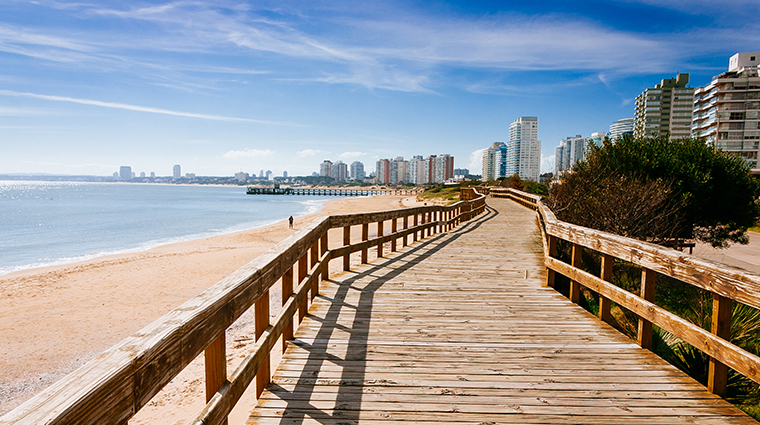
Comfortably wedged between Brazil and Argentina, Uruguay is the gorgeous South American country of your travel fantasies. Its verdant interior, colonial-era architecture (especially in capital city Montevideo) and beach-lined coast hit all the vacation high notes — a sublime food scene (look out for Mercado del Puerto’s sensational steakhouses) doesn’t hurt, either.
Off the radar of North American travelers until recently, Uruguay has a laid-back vibe and sleepy beach towns that have attracted South American glitterati for years with its array of resort destinations like luxe Punta del Este (regarded as the Southern Hemisphere’s French Riviera) and remote retreats such as Cabo Polonio, where you’ll find almost no electricity and few roads.
Despite their relaxed mentality, though, Uruguayans know how to have a good time. Nightlife is huge here with bars and clubs staying open until between 6 and 7 a.m. (most locals don’t even go out for drinks until 11 p.m.) and the longest-running Carnival celebration in the world.
- Attractions and Landmarks
- Food and Wine

Dreaming of your next trip?
I agree to the Forbes Travel Guide Privacy Policy , Terms , and Cookie Policy . I understand I can withdraw my consent at any time.
Sign up for our newsletter

The Best Places to Visit in Uruguay

Are you wondering what the best places are to visit in Uruguay?
Uruguay is a small country located in South America that tourists often overlook. It has a lot to offer though.
From the beautiful beaches of Punta del Este to the charming village of Colonia del Sacramento, there is something for everyone in Uruguay.
If you are looking for a more off-the-beaten-path destination in South America, you want to visit Uruguay!
In this article I’ll share with you the top places to visit in Uruguay and what each place has to offer.
1. Punta Del Este

Punta del Este is Uruguay’s most popular tourist destination.
This beach town is home to beautiful beaches, luxury hotels, and trendy restaurants. It’s often nicknamed the Saint-Tropez of South America.
Punta del Este is known for its good nightlife and is a popular destination for surfers as well.
If you are looking for a lively beach destination in Uruguay , Punta del Este is the place for you!

And, if you go to Punta del Este, do visit the famous giant ‘Fingers of Punta Del Este’!
Where to Stay in Punta Del Este
High-end option: The Grand Hotel
Mid-range option: Atlantico Boutique Hotel
Budget option: RocaMar Hostel Boutique
2. Colonia Del Sacramento

Colonia del Sacramento is a historic city founded by Portuguese settlers in 1680.
The city has many buildings from this period and is known as one of the best-preserved colonial cities in South America . In fact, its historic quarter is a UNESCO World Heritage Site.
It’s also home to some fantastic restaurants serving good local cuisine.
Discover some of the museums, theater, art and handicrafts while you are exploring this top place to visit in Uruguay.
Where to Stay in Colonia Del Sacramento
High-end option: Charco Hotel
Mid-range option: Costa Colonia Riverside Boutique Hotel
Budget option: Posada Mela
3. Cabo Polonio

Cabo Polonio is a small, remote town located on the coast of Uruguay. Most of the houses have no electricity or running water and in the evenings the town is dressed in candles and street lamps.
The town is surrounded by dunes, lagoons, and beaches, making it a great place for those looking to escape the hustle and bustle of city life.
There is no road going into Cabo Polonia , which adds to the uniqueness of this destination. There are three ways to visit Cabo Polonio and its beautiful beaches: walking the almost 6 kilometers of sand dunes, taking a Jeep or special truck, or on horseback.
What began as a small fishing village has slowly grown into a tourist destination offering handicrafts and tourist activities. But, because it’s not as easy to get to as nearby Valizas and Aguas Dulces, it retains more of a quiet, off-grid vibe.
Where to Stay in Cabo Polonia
Mid-range option: La Cañada Cabo Polonia
Budget option: Viejo Lobo
4. Montevideo

Montevideo is the capital of Uruguay and a bustling city full of culture and history .
The city has a great mix of old-world charm and modern amenities, and there is something for everyone to enjoy. Be sure to check out the Mercado del Puerto, a vibrant market full of local color and flavor.
If you’ve visited other Latin American capital cities you might be surprised by how laid-back Montevideo is. Instead of traffic jams and potholes you’ll find well-paved roads and relatively quiet streets.
It’s also not a massive city, making it easy to explore in just a few days.
Book a walking tour through the old city, or a bike tour to see even more of Montevideo.
Montevideo definitely is one of the best places to visit in Uruguay.
Where to Stay in Montevideo
High-end option: Alma Histórica Boutique Hotel
Mid-range option: FAUNA Montevideo
Budget option: MedioMundo Hostel

Salto is Uruguay’s second-largest city. It’s built on the banks of the Uruguay River and borders Argentina.
The city dates back to 1756 and offers several national historic landmarks including the Larrañaga Theater and the traditional 18 de Julio market.
In the center of the city, Calle Uruguay is a lively shopping street lined with cafes. On weekends in the evenings this is a popular hangout for locals to socialize and drink mate .
But, the most popular reason to visit Salto is to go to Termas del Daymán, just southeast of the city. Termas del Daymán has natural hot springs and outdoor pools and spas .
North of the city you’ll find Lake Salto Grande and the Salto Grande Dam. There are natural observation circuits here, white sandy beaches, forested parks, and a water park.
Where to Stay Around Salto
High-end option: Altos del Arapey Golf & Spa (far from the city but a beautiful hotel)
Mid-range option: Hotel La Posta del Dayman
Budget option: Apart Hotel Géminis
6. La Paloma

La Paloma is a beautiful beach town located in the Rocha Department of Uruguay.
The city has long sandy beaches and is a popular summer destination for both South Americans and Europeans.
Surfing , swimming, sunbathing, whale watching, and bird watching are popular activities here.
La Paloma is also home to some fantastic seafood restaurants with fresh fish daily, plus you’ll often find free concerts to enjoy.
Where to Stay in La Paloma
High-end option: UY Pro Sur Hotel
Mid-range option: Sotavento Apart Hotel
Budget option: Las Cabañas de Ana
7. Punta Del Diablo

Punta del Diablo is a small fishing village located in the Rocha Department of Uruguay.
The town has a laid-back vibe and beautiful beaches , making it an ideal destination for those seeking relaxation on their vacation.
In summer (December to February), the town is a popular destination for tourists and backpackers looking to surf or enjoy the beaches.
Outside of the summer season, the town is very quiet and a good place to visit if you want to get away from it all.

If you want a break from the beaches, go to Santa Teresa National Park. Located just north of the town, this national park boasts an 18th-century fort and nice trails.
Where to Stay in Punta Del Diablo
High-end option: Mar Adentro Apart Hotel & Suites
Mid-range option: Posada Las Maravillas
Budget option: Coral Apartment

Carmelo is a small town located on the Rio de la Palta, the river that forms the border between Argentina and Uruguay.
The town offers some nice riverside beaches and is surrounded by vineyards .
Carmelo has long been a favorite of the Argentinian elite and is a great place to visit if you’re looking for a luxury trip or perhaps a romantic getaway. That being said, there are plenty of inexpensive places to stay around Carmelo as well.
Visit one of the boutique wineries to enjoy the high-quality local wine and soak up the scenery.
Go horseback riding to enjoy the countryside or spend the day fishing, kayaking, or playing golf.
Where to Stay in Carmelo
High-end option: El Legado Wine Lodge
Mid-range option: Mykonos Carmelo
Budget option: La Tortuga Casas de Campo
9. Tacuarembó

Tacuarembó is a city in northwestern Uruguay known for its gaucho culture.
The city is surrounded by wide open plains, rolling hills, and picturesque villages, making it a great destination for those who love nature and animals.
The best time to visit Tacuarembó is during the Fiesta de la Patria Gaucha. This big annual event celebrates regional countryside life and customs.
The event takes place on the second weekend of March, on Lavanderas Lake. It remains a very traditional event, with most attendees being somehow connected to the gaucho culture of Northern Uruguay.
Where to Stay in Tacuarembó
Mid-range option: Cabañas El Calabres
10. Piriapolis

Piriapolis is a resort town with a very Mediterranean feel , located on the south coast of Uruguay.
The city has beautiful beaches with crystal clear water and is a popular destination for those looking to escape the hustle and bustle of city life.
If you are traveling with your family , this is a good place to go.
Pirapolis has a beautiful promenade and it’s a great city to explore by bicycle. Do take the chairlift up San Antonio Hill for a stunning view of the area.
Where to Stay in Piriapolis
High-end option: Skyblue Apart Hotel Punta Colorada
Mid-range option: Hotel Colón
Budget option: Luna Azul
11. Durazno

Durazno is the most central city in Uruguay, located on the banks of the Yi River.
It’s a nice small city with shops, restaurants and historic buildings. There is a good museum, Casa de Rivera, focusing on Uruguayan archaeology, Gaucho art, and local history.
The city is famous for its beaches on the Yí River, its cheerful citizens, and its popular festivals including the Folklore Festival and the ‘Meeting of the Gauchos’.
Where to Stay in Durazno
Mid-range option: Hotel Santa Cristina
12. Paysandú

Paysandú is a city located on the banks of the Uruguay River and is known for its beautiful architecture and great riverfront.
Entire families gather on the city shores to enjoy the sandy beaches, practice some sports, swim, or just enjoy the stunning sunsets on the Uruguay River.
Paysandú is a great destination for anyone who loves fishing, sailing, and other watersports . But the city also has a rich culture and history, which you can explore at the city’s many museums and historical landmarks.
One of the biggest annual events in Uruguay is the Beer Week which is celebrated in Paysandú in April and attracts people from all over the world.
One of the main attractions outside of the city are the Guaviyú and Almirón hot spring resorts.
Paysandú has a typical dessert called “chajá” which you’ll have to try! You can find it in most restaurants around the city.
Where to Stay in Paysandú
High-end option: Hotel La Castellana
Mid-range option: Gran Hotel Paysandú
Budget option: Apartamento Centrico

Chuy is one of the more unique places to visit in Uruguay because of its location.
The main street of Chuy forms the border between Uruguay and Brazil.
One half of the town is called Chuy and is located in Uruguay, the other half is spelled Chui and is located in Brazil.
And yes, that also means that in half of the town the official language is Spanish and they pay in pesos while in the other half of town the official language is Portuguese and they use reais.
The border is open, so you can visit both Chuy and Chui.
Both sides of the town are known as a tax-free shopping destination popular among bargain hunters. A majority of the shops are run by Turkish, Armenian, and Arab immigrants, giving the town a very multicultural vibe.
Located just west of Chuy you can find the Fuerte de San Miguel, a military fortification built by the Portuguese in 1737.
Where to Stay in Chuy
Mid-range option: Paz y Armonía Private House
Budget option: Descanso al Paso Chuy
Conclusion – Places to Visit in Uruguay

Uruguay is a beautiful country that has so much to offer its visitors.
It’s not as well known as neighboring Argentina or Brazil, but that might make it all the more interesting to discover this country for yourself!
Plus, traveling around Uruguay is easy. The buses are efficient and cheap, connecting all the major towns.
I hope this list of places to visit in Uruguay has given you a better idea of what this country has to offer and where you’d like to go.
- How to Stay Safe While Traveling
- What to Look for in Travel Insurance
- Things to Do During a Layover
- How to Plan a Perfect Solo Trip
Like this article about which places to visit in Uruguay? Pin it!

This blog about where to go in Uruguay contains affiliate links. I may receive a commission for purchases made through these links, at no additional cost to you.
Leave a Comment Cancel reply
Contact: [email protected]
Created by Mar y San Design
A local’s guide to Montevideo, Uruguay

Oct 25, 2022 • 6 min read

Montevideo is a charming capital city, where the pace of life is wonderfully relaxed © ThiagoSantos / Shutterstock
The capital of Uruguay , Montevideo is a charming metropolitan oasis where the lifestyle of the rural campo (countryside) influences a not-so-fast pace of city living.
Once a fortified citadel, the Ciudad Vieja (old city) is today surrounded by traces of the city walls, first erected in 1741. Beyond this historic core, visitors can stroll the longest continuous sidewalk in the world, relax on sandy beaches, visit countless museums or sway to carnaval rhythms year-round.
Here’s our guide to the top things to do in Montevideo, Uruguay.
1. Enjoy sand and surf on Montevideo’s beaches
Montevideo is surrounded by the wide Río de la Plata, and the most popular beach in town is Playa de Los Pocitos, which offers soft sand and volleyball courts.
This true city beach is framed by the waterfront buildings of the namesake Pocitos neighborhood. In the summer months, you’ll see scads of umbrellas that protect from the high UV rays in Uruguay (which can reach as high as 11).
Local tip : The beaches are small and get busy on the weekend, so plan your beach day during the week to avoid crowds.

2. Visit Museo de la Memoria
The most important museum to visit in Montevideo is the Museo de la Memoria , open since 2007. Located about 1.9mi (3km) from Prado Park, the museum offers insights and context on the country’s 12-year civic-military dictatorship.
The site honors the 200 Uruguayans who disappeared during the junta (the Desaparecidos ), and who are still unaccounted for.
A permanent exhibition featuring pots and pans looks inconspicuous – yet during this era Uruguayans used these simple kitchen tools to object to the state-sanctioned killing of civilians.
In a protest known as cacerolazo , citizens banged these objects outside their windows, creating chaotic noise to make their numbers heard.

3. Load your plate with grass-fed beef at these best places to eat in Montevideo
Uruguay is known across the world for its superb grass-fed beef. (There are at least three sheep and three cows per Uruguayan citizen!)
At home, Uruguayans gather with friends and family almost weekly for an asado, at which different cuts of grilled meat are served along with vegetables.
If you don’t manage to score an invite, you can still have a traditional parrilla dinner experience at García , a popular restaurant that’s served premium cuts of meat paired with curated local and international wines since 1967. The elegant dining room is a favorite for Uruguayans celebrating a special occasion.
Local tip : The well-known Mercado del Puerto has, alas, lost its charm, and is today an overrated, overpriced tourist trap. Instead, head to Casa Pastora , Mercado Williman and Mercado Ferrando , which all feature food stalls serving parrillas .

4. Experience Carnaval year-round
If you visit Uruguay between the end of January and early March you can take part in the longest carnaval celebration in the world . Uruguayans celebrate for a full 40 to 50 days in the lead-up Easter (known as Tourism Week in Uruguay). The festivities are primarily attended by locals, though foreign visitors are most welcome.
The tradition of carnaval was brought to Uruguay by enslaved Africans. Their descendants invented candombe drums, a large percussion instrument that’s worn on the body and played as the performer walks in the street.
Candombe is the heartbeat of Uruguay, and has been designated a Unesco Intangible Cultural Heritage of Humanity since 2009. During carnaval , candombe is part of nearly every performance, with groups painting and decorating their drums to match the colors of the bedazzled lingerie and feathers worn by the dancers.
To kick off the celebrations, the Inaugural Parade takes place at the end of January, at which candombe drummers parade with dancers along central Avenida 18 de Julio. The following night is usually the Samba Schools Parade, where performers dressed in colorful carnaval garb dance through the street.
In February, the Las Llamadas parade features candombe drummers performing as they walk the streets of the Afro-Uruguayan neighborhoods of Barrio Sur and Palermo.
Between parade dates, you can visit one of the many tablados (stages set around the city), which play host to frequent performances by satirical singing groups, called murga , that wear face paint and clown-like costumes.
If you can’t make it for the festivities, get a taste of the celebrations at the Museo del Carnaval , which houses videos of performances, costumes and drums. Additionally, candombe groups practice year-round – and even without the colorful costumes and fanfare, they still offer a memorable experience.
Each neighborhood has a group that typically rehearses once a week on the streets in preparation for the annual Competition of Carnaval Groups.
Every Sunday in the late afternoon, drummers gather in Barrio Sur to play candombe – and anyone is welcome to join in. Simply follow the sound of the drums to find the group.
Local tip : Unfortunately, since pickpocketing is prevalent at these gatherings you should keep an eye on your personal belongings.

6. Pick your favorite soccer team
The first World Cup was held in Uruguay in 1930 at Estadio Centenario – and the Uruguayans (naturally) won the title.
Today, the two most prominent teams in fútbol -mad Montevideo are Peñarol and Nacional. The former dons yellow and black and plays at the Campeón del Siglo stadium, while the latter wears red, white and blue and calls Gran Parque Central stadium home.
Choose a team to support, then catch a match during the Uruguayan Primera División season, which lasts from May to December. If there isn’t a game while you’re in town, you can learn more about Uruguayan soccer at the Museo del Fútbol .
7. Cycle, rollerblade or stroll the Rambla
Montevideo’s riverfront Rambla is the longest continuous sidewalk in the world, at nearly 14 miles (23km). The avenue snakes along the coast and is popular for cycling and rollerblading.
In Montevideo, a favorite local pastime is to prepare yerba maté, a traditional Indigenous drink first cultivated by the Guaraní in Paraguay and popularized as a shared communal drink by the Charrúa in Uruguay.
Many Uruguayans always carry their mate kit with them, which includes the yerba (loose caffeinated tea leaves) a mate (the cup, traditionally a gourd), bombilla (perforated spoon-like straw) and thermo (hot-water bottle).
Take your mate and go for a stroll on the Rambla around sunset. You’ll pass by a skate park, the famed Montevideo sign, the moving Holocaust Memorial, Pittamiglio Castle and plenty of street musicians.
Local tip : It’s customary in Uruguay to share mate with complete strangers. Since this isn’t sanitary, we recommend buying your own kit, available at any grocery store.
8. Head east to Punta del Este
Once you’ve gotten to know the capital, take a direct bus from the Tres Cruces terminal out east to Punta del Este on the Atlantic coast.
Notable things to do here include relaxing at Playa Brava by the famous La Mano en la Arena sculpture, watching surfers at Playa el Emir or catching the sunset while enjoying a pitcher of clericó (white-wine sangria) from Parador I’marangatú .
Planning tip: Take a day trip on your day trip, and head from Punta del Este to places like the Punta Ballena whale lookout point, the Fundación Pablo Atchugarry sculpture garden and the Arboretum Lussich.
Explore related stories

Jun 21, 2024 • 9 min read
June 25 is a holiday we can all get behind: Bourdain Day, saluting life and legacy of the one-of-a-kind chef-adventurer. Here are 22 places he loved.

Oct 18, 2023 • 5 min read

Sep 28, 2023 • 12 min read

May 23, 2022 • 6 min read

Mar 14, 2022 • 16 min read

Mar 7, 2022 • 6 min read

Feb 3, 2022 • 6 min read

Jan 25, 2022 • 6 min read

Jul 7, 2021 • 5 min read

Jan 20, 2021 • 4 min read

TOP OF PAGE
Quick Facts
Best Time To Go
Cost & Spending
Travel Tips
Regions & Highlights
What To See & Do
What To Eat
Where To Stay
Trip Planning

Welcome traveler!
We're Andre & Lisa, adventurers and experienced budget travelers.
We have over two decades of travel experience and since 2018 have led a full-time nomadic lifestyle.
L earn more about us !
Thank you for visiting and we hope you find value in our destination pages! We thoroughly research and curate all content ourselves and everything you find on this site is put together by only the two of us.

URUGUAY TRAVEL GUIDE
Uruguay is a South American country known for its verdant interior and beach-lined coast. The capital, Montevideo, revolves around Plaza Independencia , once home to a Spanish citadel. Progressive, stable, safe and culturally sophisticated, Uruguay offers visitors opportunities to experience everyday ‘not made for tourists’ moments, whether caught in a cow-and-gaucho (cowboy) traffic jam on a dirt road to nowhere or strolling with maté -toting locals along Montevideo’s beachfront.
It pays to dig deeper than just the cosmopolitan Montevideo though. Go wildlife-watching along the Atlantic coast, or hot-spring-hopping up the Río Uruguay, or horseback riding under the big sky of Uruguay’s interior, where vast fields spread out like oceans.
⬇️ SEE OUR REGIONAL GUIDES! ⬇️
Travel guide.

- Capital : Montevideo
- Government : Republic
- Currency : Uruguayan peso (UYU)
- Area : 176,220 km²
- Population : 3,449 million (2018)
- Language : Spanish (official), Portuñol, or Brasilero
- Religion :Roman Catholic 47%, non-professing or other the remainder, with almost 20% agnostic/atheist
Uruguay is often called the Switzerland of South America not for geographical features but for a stable democracy and social benefits such as free education, but mostly due to a developed financial sector based on bank secrecy.
In 2013 Uruguay became the first country in the world to fully legalize cannabis. Uruguayan citizens are allowed to grow up to 6 marijuana plants for personal use each year, and are entitled to purchase up to 40g per month at local pharmacies through the government’s national distribution system. Smoking marijuana in public is perfectly legal – for anyone, foreigners included – in the same places where cigarette smoking is permitted. However, non-Uruguayans are not allowed to purchase any for themselves.
- 6 January, Epiphany/Children’s Day
- 19 April, Landing Day of the 33 Orientales
- 1 May, Labor Day
- 18 May, Battle of Las Piedras
- 19 June, Birthday of José Gervasio Artigas
- 18 July, Constitution Day
- 25 August, Independence Day
- 12 October, Battle of Sarandi/Día de la Raza
- 2 November, All Souls’ Day
- Carnaval - Much livelier and longer-lasting than its Buenos Aires counterpart, Montevideo’s multiweek Carnaval is the cultural highlight of the year. Festivities begin as early as January and end as late as March, depending on the year. Montevideanos cut loose in a big way every year, with music and dance filling the air for a solid month. Not to be missed is the early February Desfile de las Llamadas, a two-night parade of comparsas (neighbourhood Carnaval societies) through the streets of Palermo and Barrio Sur districts. Another key element of Montevideo’s Carnaval are the murgas , organized groups of 15 to 17 gaudily dressed performers, including three percussionists, who perform original pieces of musical theatre, often satirical and based on political themes all over the city
- Semana Criolla - (March) After Carnaval, this is Montevideo’s liveliest fest, and is essentially a celebration of gaucho culture – those tough-looking, leather boot-wearing cowboys from Uruguay’s interior who manage to make oversized belt buckles look cool. Come for rodeo events, concerts, open-air barbecues and craft fairs.
- Fiesta de la Patria Gaucha - (March) This colourful, homegrown five-day event in Tacuarembó is the planet’s largest gaucho festival, attracting participants from Argentina, southern Brazil and all over Uruguay for exhibitions of traditional gaucho skills, music and other activities. ( http://www.patriagaucha.com.uy/)
- Días del Patrimonio - In the last weekend of September or first weekend of October, Montevideo’s museums, churches and historic homes all open their doors free to the public during the National Heritage Days, celebrated throughout Uruguay.
DO YOU NEED A VISA FOR
<<VISA RESULT>>
<< Visa Details >>
For the latest requirements or for application click
Let iVisa take the pain out of travel planning and assist you with Electronic visas, Travel Authorizations, Visas on Arrival, and even Paper Visas. They can also help with Health Declarations and Embassy Registrations. If you're from the US, they provide a One-Stop Shop to renew your Passport securely and error-free.
POSTS ON URUGUAY

SEASONS AT A GLANCE
Most destinations have different times of the year when they’re more or less popular with tourists.
Peak Season
Shoulder Season
Off Peak Season

BEST TIME TO VISIT URUGUAY
The best time to visit Uruguay is October through March, when the sun shines and temperatures are mild. Punta del Este overflows with tourists from Argentina in summer; if you're seeking a more relaxed time to visit the beaches of the coast, consider going between October and December. That said, every season in Uruguay offers travellers ideal weather for a certain type of activity. In the country’s autumn months (from late April to early June), you can enjoy exploring the city, as well as the coastal region without the crowds of the summer season.
Temperatures begin to cool in Uruguay during the Autumn months (March - May). While the busy tourist season of the summer dies down, visitors at this time will enjoy warm days and quiet streets perfect for strolling. Additionally, marked as the harvest season, vineyards across the country are busy picking grapes. The event is largely celebrated, including wine festivals and events at many vineyards and towns across the country.
- February - Street theatre and drumming consume Montevideo during Carnaval celebrations.
- March - Tacuarembó’s gaucho festival, plus lower prices on the still-sunny Atlantic coast.
- October - Soak in Salto’s hot springs, or explore Uruguay’s monuments for free during Días del Patrimonio.
BEST TIME FOR:
While Uruguay is not renowned for its snow sports, there are indeed opportunities for skiing and snowboarding, particularly in the Andes Mountains.
These areas offer a few small ski resorts that cater mainly to local enthusiasts. Snowfall in Uruguay is a rare event, mostly occurring in the mountainous regions during the Southern Hemisphere's winter months from June to September.
For those seeking a unique experience, these rare snowy periods can provide a picturesque setting for winter sports.
You can enjoy outdoor activities in Uruguay throughout the year. The peak season is from December to March and can be a little hot, while the months of May to September can get rather chilly.
The best time for hiking is during the shoulder season months of April, October and November when the crowds are less, but the weather still good.
Uruguay offers a variety of hiking opportunities that cater to different levels of experience and interest. For instance, the Lunarejo Valley provides a picturesque landscape for hikers, while Cerro de los Cuervos offers a more challenging terrain.
Nature enthusiasts can explore the diverse flora and fauna at Sierra de las Ánimas Forest or enjoy the serene beauty of Quebrada de los Cuervos. For those seeking coastal scenery, Santa Teresa National Park presents a perfect blend of forest trails and beach walks. Each of these destinations promises a unique hiking experience in the beautiful South American country.
The best time to enjoy the beautiful beaches of Uruguay is from October to May, with the busiest peak tourist season (and warmest weather) between December and March.
Uruguay boasts a variety of beautiful beaches, each offering a unique experience. Punta del Este is renowned for its vibrant atmosphere and is a hub for celebrities and tourists alike, featuring the famous Brava Beach known for its surfing opportunities and the iconic La Mano sculpture.
For those seeking a more tranquil setting, Playa Mansa offers serene waters and stunning sunsets, while Pocitos Beach combines upscale surroundings with cultural attractions like the Naval Museum of Montevideo. For a more secluded experience, the remote sands of Cabo Polonio provide a peaceful retreat amidst nature.
Uruguay has over 80 surf breaks scattered along its 200kms of Atlantic coast. There are waves all year round, but the best months are from September to November and from March to May.
Places like La Paloma, Punta del Diablo, and Piriapolis are known for their surf-friendly beaches, catering to different skill levels from beginners to advanced surfers.
With consistent waves and a rich surfing culture, Uruguay is a hidden gem for surf enthusiasts looking to ride the waves in less crowded spots. Whether you're seeking lessons or chasing the perfect break, Uruguay's beaches provide an ideal setting for an unforgettable surfing experience.
You can find suitable conditions for kitesurfing in Uruguay from September to March, with December and January being the most consistent months.
Popular spots include Playa La Aguada and Playa del Barco in La Pedrera for their consistent winds and scenic beaches. Punta del Este is also a favored destination, offering a mix of luxury and kitesurfing experiences.
For those looking for flat water conditions, Laguna Garzón near José Ignacio provides an excellent setting for freestyle riding and learning. With its welcoming atmosphere and uncrowded beaches, Uruguay is a hidden gem for kitesurfers seeking adventure.
For more details on kite surfing in Uruguay expand this section!
LOOKING FOR ALTERNATIVES
To uruguay, find your perfect destination.
Advanced, real-time destination filter by visa required, region, health risk, travel budget, country value, tourist seasons, best weather and activity or sport.
URUGUAY TRAVEL COSTS
Generally speaking, Uruguay is considered to be moderately expensive compared to other destinations in South America, but it can be more affordable than some of its neighboring countries like Argentina or Chile.
Here are some factors to consider when evaluating the cost of traveling to Uruguay:
Accommodation costs can range from budget hostels to luxury resorts . Prices vary depending on the location and the level of comfort you seek. In popular tourist areas like Punta del Este or Montevideo, expect higher prices, especially during peak seasons.
Transportation such as buses, taxis, and shared taxis called "remises," is generally affordable. Renting a car is also an option but can add to your expenses.
Food and Dining out out in Uruguay can be reasonably priced, especially if you stick to local eateries and markets. Uruguay is famous for its beef, so trying local specialties like "asado" (barbecue) can be a highlight. However, dining at upscale restaurants or international chains can be more expensive.
The cost of activities and attractions in Uruguay varies. Some activities like visiting museums or exploring national parks may have nominal entrance fees, while others like guided tours or water sports can be more costly.
Keep in mind that exchange rates can affect your expenses. It's a good idea to check the current exchange rate and plan your budget accordingly.
In comparison to other destinations in South America, Uruguay might be slightly more expensive than countries like Peru or Bolivia but could be on par with countries like Brazil or Colombia, depending on where you go and how you travel. Ultimately, your travel budget and preferences will determine whether Uruguay is expensive for you compared to other similar destinations.
HOW EXPENSIVE IS URUGUAY
Here's a sample daily budget breakdown for traveling in Uruguay, based on mid-range expenses:
Accommodation : Hostels or budget hotels: $30 - $50 per night, Mid-range hotels or guesthouses: $70 - $150 per night. Food and Dining :Breakfast at a café or hostel: $5 - $10, Lunch at a local restaurant or market: $10 - $20, Dinner at a mid-range restaurant: $20 - $40, Total daily food expenses: $35 - $70 Transportation :Public transportation (buses, taxis): $5 - $15 per day, Renting a bicycle: $10 - $20 per day, Renting a car: $50 - $100 per day (excluding fuel and insurance) Activities and Attractions :Entrance fees to museums and attractions: $5 - $15 per attraction, Guided tours or excursions: $30 - $100 depending on the activity, Beach activities (renting umbrellas, chairs, etc.): $10 - $30 per day Miscellaneous :Souvenirs and miscellaneous expenses: $10 - $30 per day, Tips and gratuities: Tipping is not mandatory but appreciated, around 10% of the bill is customary.
Total Daily Budget Range : $105 - $285
Keep in mind that this is a general estimate and actual expenses can vary based on your travel style, preferences, and the specific locations you visit within Uruguay.
VALUE RANK:
Find discount flights to, travel tips for uruguay.
Get off the beaten track : Look beyond the tourist hot spots and embrace Uruguay’s wide-open spaces in places like Valle del Lunarejo and Cabo Polonio.
Learn Some Spanish Phrases : While many Uruguayans speak English, especially in tourist areas, knowing some basic Spanish phrases can enhance your experience and make it easier to communicate with locals.
Montevideo : If possible, visit Montevideo on the weekend, when you can enjoy some of the city’s most iconic local events, like the Ciudad Vieja antiques market.
Explore Beyond Montevideo : While Montevideo, the capital city, is vibrant and worth exploring, don't miss out on other gems like Punta del Este, Colonia del Sacramento, and the countryside. Each destination offers its own unique charm and attractions.
Try the Local Cuisine : Uruguay is famous for its beef, so be sure to try the traditional barbecue known as "asado." Also, don't miss out on other local dishes like "chivito" (a sandwich with steak, ham, cheese, and other toppings) and "mate" (a traditional herbal tea).
Stay Safe : Uruguay is generally considered safe for travelers, but it's still important to take common-sense precautions. Keep an eye on your belongings, especially in crowded areas, and be cautious when using ATMs.
Use Public Transportation : Travel in Uruguay is refreshingly easy. Uruguay has a reliable and affordable public transportation system, especially in Montevideo and other major cities. Buses are a convenient way to get around, and taxis are also readily available.
Respect Local Customs : Uruguayans are known for their friendliness and hospitality. Show respect for local customs and traditions, such as greeting people with a handshake or kiss on the cheek, and avoid discussing sensitive topics like politics or religion unless invited to do so.
Embrace the Beach Culture : Uruguay boasts beautiful beaches along its coastline. Whether you're looking to relax, swim, or enjoy water sports, be sure to spend some time soaking up the sun and enjoying the beach culture. One of the prettiest beach towns on the Atlantic Coast, the Punta del Diablo has an easy-going vibe and laid-back guesthouses, beachfront bars and fireside parties on the sands.
Stay Flexible : Uruguayan culture values "tranquilo" (relaxation) and things may not always go according to plan. Embrace the laid-back atmosphere and be flexible with your itinerary.
GETTING AROUND MONTEVIDEO
Buses, shuttle vans, taxis and remises (private cars) make the 20km journey from the airport into Montevideo. Cheapest are the local Copsa and Cutcsa buses (US$1.50, 45 minutes) that leave from a stop directly in front of the arrivals hall, making frequent stops en route to Terminal Suburbana, five blocks north of Plaza del Entrevero. Faster and more comfortable is COT’s direct bus service between the airport (US$4.50, 30 minutes) and Tres Cruces bus terminal. Look for the stop to the right as you exit the arrivals hall. Shared shuttle vans (five-person minimum) also travel from the airport to the center (US$10 per person); buy tickets from the taxi counter in the airport arrivals hall. Fixed-rate airport taxis charge between US$30 to US$40 (depending on neighbourhood) for the 30- to 45-minute taxi ride from the airport into Montevideo. You can also book a private car (remise) for the same price in advance on www.bybremises.com .
Montevideo’s city buses , operated by Cutcsa , go almost everywhere for < US$1 per ride. For the beach neighbourhoods of Punta Carretas and Pocitos, take city buses 174 and 183, respectively, from in front of the terminal.
At the time of writing Uber is available in Montevideo as well as in Punta del Este .
GETTING AROUND URUGUAY
Buses are comfortable, the government-regulated fares are reasonable and distances are short. Many companies offer free wi-fi on board. In the few cities that lack terminals, all companies are within easy walking distance of each other, usually around the main plaza.
If you are staying in Uruguay less than 90 days and plan to drive , you need only bring a valid driver’s license from your home country. Uruguayan drivers are extremely considerate on average.
Taxis, remises (private cars) and local buses are similar to those in Argentina. Taxis are metered; between 10pm and 6am, and on Sundays and holidays, fares are 20% higher. There’s a small additional charge for luggage, and passengers generally tip the driver by rounding fares up to the next multiple of five or 10 pesos. Uber and similar ride-sharing services are also widely used in Montevideo and Punta de Este.
Micros (minibuses) form the backbone of the local transit network in smaller coastal towns such as La Paloma.
REGIONS & HIGHLIGHTS OF URUGUAY
Uruguay is a relatively small country, but it offers a diverse range of attractions across its various regions. Here are some of the main regions worth visiting and their highlights:
Montevideo and the Coast :
Montevideo : Uruguay’s capital and largest city, Montevideo is a favourite for many travellers: small enough to walk or cycle around, but big enough to have some great museums and nightlife, plus an impressive string of beaches along the Río de la Plata. Young montevideanos (people from Montevideo) take genuine pride in their city, and the arts and artisan scene is particularly strong. Montevideo’s most interesting buildings and museums are in the Ciudad Vieja (Old Town), west of Plaza Independencia, the city’s largest square. Hire a bicycle and go cruising along the riverfront Rambla, a 20km walking-jogging-cycling track that leads past Parque Rodó, one of Montevideo’s most popular parks, then follows the shoreline to the city’s eastern beaches: Punta Carretas, Pocitos, Buceo, Malvin and Carrasco.
Punta del Este : A glamorous beach resort city famous for its stunning beaches, upscale restaurants, and vibrant nightlife. Visit Playa Brava and Playa Mansa, browse the shops and galleries in La Barra, and take a selfie at the iconic hand sculpture, La Mano.
Colonia del Sacramento :
A UNESCO World Heritage Site renowned for its well-preserved colonial architecture and cobblestone streets. Explore the historic quarter, visit the lighthouse for panoramic views, and stroll along the picturesque waterfront.
Eastern Region :
This is Uruguay’s playground - a long stretch of beaches all the way from Montevideo to the Brazilian border offers something for everyone: from surfers, party animals, nature lovers to family groups. In midsummer prices skyrocket and beach towns seriously pack out. During the rest of the year you might have them to yourself. Conflicts between Spain and Portugal, and then between Argentina and Brazil, left eastern Uruguay with historical monuments such as the imposing fortress of Santa Teresa. Just inland lies a varied landscape of palm savannas, lagoons and marshes rich in birdlife.
Cabo Polonio : A remote coastal village with no roads or electricity, known for its pristine beaches, shifting sand dunes, and abundant wildlife. Take a 4x4 tour to explore the area, climb the iconic lighthouse, and enjoy the laid-back atmosphere.
Piriápolis : A charming beach town nestled between hills and the sea, offering scenic landscapes, historic landmarks, and outdoor activities like hiking and horseback riding. Don't miss the panoramic views from Cerro San Antonio.
Western Region :
The land west of Montevideo is in many ways the ‘real’ Uruguay – little river towns separated by large expanses of pampas and wheat fields. It’s far off the tourist trail, mostly, except for the region’s superstar, Colonia del Sacramento, whose charms attract visitors from all over the world.
Colonia del Sacramento : Take a step back in time as you explore the gracious 18th-century cobbled streets and fascinating history of former smugglers’ haven, Colonia del Sacramento in Uruguay. Check out the great bar and restaurant scene and the gorgeous position on a peninsula of the Río de la Plata. All this and its super-accessible location a short hop away from both Montevideo and Buenos Aires make ‘Colonia’ a classic tourist town, but even on weekends it’s worth dodging the crowds and letting yourself get seduced by the town’s eternal charms.
Salto : Known for its hot springs and thermal baths, Salto is a popular destination for relaxation and wellness. Visit Termas del Daymán or Termas de Arapey to soak in the therapeutic waters and enjoy spa treatments.
Paysandú : A city situated on the Uruguay River, offering opportunities for outdoor recreation such as fishing, boating, and birdwatching. Explore the waterfront area, visit historic sites like the San Francisco de Paysandú Cathedral, and sample local cuisine.
Northern Region :
Tacuarembó : Known as the "cradle of gaucho culture," Tacuarembó is a rural region with vast grasslands, estancias (ranches), and traditional festivals celebrating Uruguayan cowboy heritage. Explore the countryside on horseback, attend a rodeo or folklore event, and learn about gaucho traditions at local museums.
Download map waypoints for URUGUAY here: KML / GPX
WHAT TO SEE AND DO IN URUGUAY
What to see and do in urugay.
Carnaval - Dance the nights away during Montevideo’s famous festivities.
Punta del Diablo - Catch a wave or a beach party along the sultry shoreline.
Thermal Baths - Soak your travel-weary muscles in the hot springs near Salto.
Valle del Lunarejo - Get yourself off the beaten track in this pristine nature preserve.
Colonia del Sacramento - Sunbathe on the town wall like a local, or just wander around this town on the Río de la Plata.
Cabo Polonio - Get lost in the sand dunes and spot sea lions from atop the lighthouse.
Museo de la Revolución Industrial - Tour Uruguay’s newest UNESCO World Heritage Site in Fray Bentos.
Punta del Este - Hitting the beaches by day and the clubs by night.
Tacuarembó - Discover the simple joys of estancia living under the stars.
RECOMMENDED ITINERARY FOR URUGUAY
With a week up your sleeve you definitely won’t see all of Uruguay, but if you keep on the move you can see some of the best of what Uruguay has to offer. Start in the easy-going, picturesque historical river port of Colonia and head for the urban attractions of Montevideo, both an easy ferry ride from Buenos Aires. From Montevideo, continue north along the Atlantic coast and sample a few of Uruguay’s best beaches: the 1930s vintage resort of Piriápolis, glitzy Punta del Este, isolated Cabo Polonio, surfer-friendly La Paloma or the relaxed beach-party town of Punta del Diablo. Alternatively, follow the Río Uruguay upstream toward Iguazú Falls via the quirky industrial museum at Fray Bentos and the wonderful hot springs of Salto. Adding another week will allow you to do the above at a more leisurely pace, plus get out and explore Uruguay’s scenic and little-visited interior, where the gaucho (cowboy) tradition lives on.
Carnaval - Dance the nights away during Montevideo’s famous festivities.
Punta del Diablo - Catch a wave or a beach party along the sultry shoreline.
Thermal Baths - Soak your travel-weary muscles in the hot springs near Salto.
Colonia del Sacramento - Sunbathe on the town wall like a local, or just wander around this town on the Río de la Plata.
Cabo Polonio - Get lost in the sand dunes and spot sea lions from atop the lighthouse.
Museo de la Revolución Industrial - Tour Uruguay’s newest UNESCO World Heritage Site in Fray Bentos.
Punta del Este - Hitting the beaches by day and the clubs by night.
Tacuarembó - Discover the simple joys of estancia living under the stars.
SUGGESTED ITINERARIES FOR URUGUAY
One week itinerary for uruguay.
Day 1-3: Montevideo
Day 1: Arrival in Montevideo, explore Ciudad Vieja (Old Town), visit the Mercado del Puerto for lunch, and stroll along the Rambla waterfront.
Day 2: Visit Plaza Independencia, explore the Legislative Palace, and wander through Parque Rodó. In the evening, experience Montevideo's nightlife in neighborhoods like Pocitos or Punta Carretas.
Day 3: Take a day trip to nearby attractions such as Punta del Este or Colonia del Sacramento. In Punta del Este, enjoy the beaches and visit landmarks like La Mano sculpture. In Colonia, explore the historic quarter and visit the lighthouse.
Day 4-7: Punta del Este
Day 4: Travel to Punta del Este and spend the day relaxing on the beaches of Playa Brava and Playa Mansa.
Day 5: Explore the trendy neighborhood of La Barra, visit art galleries, and enjoy lunch at a seaside restaurant.
Day 6: Take a boat tour to Isla Gorriti for snorkeling or sunbathing. In the evening, explore the nightlife in Punta del Este.
Day 7: Visit nearby attractions such as Casapueblo, a unique art gallery and hotel designed by Uruguayan artist Carlos Páez Vilaró. Spend your last evening enjoying dinner and drinks overlooking the sunset.
TWO WEEK ITINERARY FO URUGUAY
Follow the itinerary for Montevideo as outlined in the one-week itinerary.
Day 4-7: Colonia del Sacramento and Montevideo
Day 4: Travel to Colonia del Sacramento and spend the day exploring the historic quarter, visiting landmarks like the lighthouse and Plaza Mayor.
Day 5: Return to Montevideo and take a day trip to nearby wineries in the Canelones wine region. Enjoy wine tastings and learn about Uruguay's wine production.
Day 6: Visit additional attractions in Montevideo, such as the Museo Nacional de Artes Visuales or the Botanical Garden.
Day 7: Relax and enjoy Montevideo's beaches, such as Pocitos or Playa Ramirez.
Day 8-14: Eastern Region
Day 8: Travel to Punta del Este and spend the day exploring the city's beaches and landmarks.
Day 9: Take a day trip to Cabo Polonio, exploring the remote coastal village and enjoying activities like dune buggying or wildlife watching.
Day 10: Return to Punta del Este and visit nearby attractions such as Casapueblo or the nearby beach town of José Ignacio.
Day 11-13: Relax and enjoy the beaches of Punta del Este, take part in water sports or boat tours, and explore the local cuisine.
Day 14: Departure from Punta del Este.
These itineraries offer a balance of cultural exploration, outdoor activities, and relaxation, allowing you to experience the diverse highlights of Uruguay within one or two weeks. Adjustments can be made based on your interests and preferences.

WHAT TO EAT IN URUGUAY
Uruguayan cuisine revolves around grilled meat. Parrillas (restaurants with big racks of meat roasting over a wood fire) are everywhere, and weekend asados (barbecues) are a national tradition. Chivitos are hugely popular, as are chivitos al plato (served with fried potatoes instead of bread). In rural Uruguay, vegetarians often have to content themselves with the ubiquitous pizza and pasta, although vegetarian- and vegan-friendly restaurants are increasingly emerging in places like Montevideo and Colonia del Sacramento. Seafood is excellent on the coast. Desserts are heavy on meringue, dulce de leche (milk caramel), burnt sugar and custard.
Asado - Mixed grill featuring various cuts of meat cooked over a wood fire.
Buñuelos de Algas - Savoury seaweed fritters.
Chajá - A sweet concoction of sponge cake, meringue, cream and fruit.
Chivito - Steak sandwich piled high with toppings.
Medio y medio - A refreshing blend of half white wine, half sparkling wine.
Most restaurants charge cubiertos – small ‘cover’ charges that theoretically pay for the basket of bread offered before your meal.
LGBTQ IN URUGUAY
I'm a paragraph. I'm connected to your collection through a dataset.

WHERE TO STAY IN URUGUAY
When visiting Uruguay for the first time, there are several regions worth considering, each offering unique attractions and experiences. Here are some options along with reasons and accommodation suggestions for each:
Where to stay in Montevideo
Montevideo is the capital city of Uruguay, offering a blend of history, culture, and modernity. It's known for its charming Old Town, beautiful coastline, vibrant street markets, and lively nightlife.
Budget: Hotel Hispano : Hotel Hispano provides affordable accommodations with basic amenities. Situated in the Ciudad Vieja neighborhood, guests can explore the historic district and nearby attractions easily.
Mid-range: Own Montevideo : Own Montevideo is a stylish mid-range hotel located in the Pocitos neighborhood. Guests can stay in modern and well-equipped rooms, enjoy amenities such as a fitness center and rooftop pool, and dine at the hotel's restaurant serving international cuisine.
Luxury: Sofitel Montevideo Casino Carrasco & Spa : Sofitel Montevideo Casino Carrasco & Spa is a luxury hotel housed in a historic building overlooking the beach. Guests can stay in elegant rooms and suites, enjoy access to a casino, spa, fitness center, and multiple dining options.
Where to stay in Punta del Este
Punta del Este is Uruguay's premier beach resort town, known for its beautiful beaches, upscale resorts, glamorous nightlife, and vibrant art scene.
Budget: Hotel Milano : Hotel Milano is another budget-friendly option located in the heart of Punta del Este. Guests appreciate its convenient location, clean rooms, and friendly staff. The hotel offers basic amenities and is a great choice for travelers on a budget.
Mid-range: Hotel Atlántico : Hotel Atlántico offers mid-range accommodations with a prime location near Playa Brava and Punta del Este's main attractions. Guests can stay in modern and well-equipped rooms, enjoy amenities such as a swimming pool and fitness center, and relax in the hotel's gardens.
Luxury: The Grand Hotel Punta del Este : The Grand Hotel Punta del Este is a luxury hotel located on Playa Brava. Guests can stay in elegant rooms and suites with panoramic views of the ocean, enjoy access to multiple swimming pools, spa, fitness center, and gourmet restaurants.
Where to stay in Colonia del Sacramento
Colonia del Sacramento is a charming colonial town on the banks of the Río de la Plata, known for its cobblestone streets, historic buildings, and picturesque waterfront.
Budget: Posada del Gobernador : Posada del Gobernador offers budget-friendly accommodations in a historic building near the city center of Colonia del Sacramento. Guests can stay in simple yet comfortable rooms and enjoy amenities such as free Wi-Fi and breakfast.
Mid-range: Charco Hotel : Charco Hotel offers mid-range accommodations with a prime location overlooking the Rio de la Plata. Guests can stay in modern and stylish rooms, enjoy amenities such as a rooftop terrace with panoramic views, and relax in the hotel's gardens.
Luxury: Radisson Colonia del Sacramento Hotel & Casino : Radisson Colonia del Sacramento Hotel & Casino is a luxury hotel located near the waterfront of Colonia del Sacramento. Guests can stay in elegant rooms and suites, enjoy access to a casino, spa, fitness center, and gourmet dining options.
Each of these areas in Uruguay offers its own unique experiences and accommodation options to suit different preferences and budgets. Whether you're interested in exploring historic cities, relaxing on beautiful beaches, or experiencing vibrant nightlife, Uruguay has something to offer for every traveler.
For hassle-free bookings, use platforms like Booking.com for competitive rates or Holiday Swap for unique homes worldwide. Ensure to book in advance, especially during peak seasons, and align your preferences with nearby activities such as surfing, snorkeling, or cultural exploration.
CHOOSE ANOTHER DESTINATION
Recent blog posts, plan your trip, visa services, let ivisa take the pain out of travel planning and assist you with electronic visas, travel authorizations, visas on arrival, and even paper visas. they can also help with health declarations and embassy registrations. if you're from the us, they also provide a one-stop shop to renew your passport securely and error-free..
FLIGHTS Find a cheap flight by using Sky scanner or Momondo . These are our favorite flight search engines. They index other travel websites and airlines across the globe to easily find you the best deal.
ACCOMMODATION
Booking.com is our number one resource for researching and booking accommodation. In addition to Booking.com , we have found Agoda.com to consistently returns the cheapest rates in Southeast Asia. For longer stays, find unique homes worldwide on Holiday Swap , the most affordable travel platform that allows you to book homes anytime, anywhere in only a few clicks.
TRANSPORT
DiscoverCars.com is a leader in online car rental bookings; we compare car rental deals from many companies so that you can choose which is best for your trip. 12Go connects the world door-to-door, from transfers to flights, under the same user-friendly ticket.
INSURANCE Travel insurance can protect you against unexpecte d illness, injury, theft, and cancellations.
Heymondo (International Travel Insurance)
World Nomads (Travel / medical insurance for long-term travelers and nomads)
SafetyWing Nomad Insurance (Travel / medical insurance for long-term travelers and nomads)
SafetyWing Remote Health (Global Health Insurance for Nomads)
Need more help to book your trip? Check our complete resource page for all the best companies to use when you travel. You will only find the companies we use ourselves.
Please note that some of the links above may be affiliate links, and at no additional cost to you,
we may earn a commission if you end up making a purchase and the income goes to keeping the site ad free.

No videos yet!
Click on "Watch later" to put videos here
Uruguay Travel Guide – Everything You Need to Know

Uruguay, a hidden gem in South America, offers a unique blend of stunning natural beauty, rich cultural heritage, and warm hospitality. This small yet captivating country is known for its pristine beaches, charming colonial towns, and a thriving arts scene.
What’s the Best Time to Visit? 📅
The best time to visit Uruguay as a tourist largely depends on your preferences and the type of experience you’re seeking. Here’s a breakdown of the seasons and what to expect during each:
- High Season: This is the peak tourist season in Uruguay, especially during January. Expect warm and sunny weather, making it ideal for beach activities and water sports.
- Festivals: Many festivals and events, including Carnival, take place during the summer months.
- Crowds: Beach towns and popular tourist destinations can get crowded, and accommodations may be pricier.
- Shoulder Season: Autumn offers pleasant weather with milder temperatures, making it a great time to explore cities and cultural attractions.
- Lower Crowds: With fewer tourists, you can enjoy a quieter and more relaxed experience.
- Wine Harvest: If you’re interested in wine, consider visiting vineyards during the grape harvest season.
- Low Season: Winter is the least popular time for tourism, making it an excellent choice for travelers who prefer solitude and lower prices.
- Mild Climate: While it’s the coldest season, the climate in Uruguay is relatively mild compared to many other countries, and you can still explore cities and cultural sites.
- Shoulder Season: Spring brings pleasant weather with blooming flowers and green landscapes. It’s a good time for outdoor activities and exploring nature.
- Surfing: Spring is a great time for surfers, as the ocean swells pick up.
- Lower Crowds: Enjoy fewer crowds compared to the peak summer season.
In conclusion, the best time to visit Uruguay depends on your preferences. If you want to enjoy beach activities and vibrant festivals, the summer months are ideal. For a more relaxed and budget-friendly experience with milder weather, consider visiting during the shoulder seasons of spring and autumn. If you prefer solitude and lower prices, the winter months are a suitable choice for exploring the country’s cultural and urban attractions.
What’s the Best Way to Get Around? 🚌
Getting around Uruguay as a tourist is relatively easy and convenient, thanks to its well-developed transportation system. Here are the best ways to get around the country:
- Buses: Buses are the most common and cost-effective mode of transportation in Uruguay. The country has an extensive bus network that connects major cities and towns. Bus travel is comfortable, and you can choose between regular and semi-cama (reclining seat) services. It’s an excellent way to explore both urban and rural areas.
- Trains: While the train network in Uruguay is limited compared to buses, there are train services available. The train ride from Montevideo to the picturesque city of San Carlos is a scenic option for tourists.
- Car Rentals: Renting a car provides the ultimate flexibility, allowing you to explore remote regions and off-the-beaten-path destinations. Uruguay has well-maintained roads, and driving is relatively straightforward. Be aware of local traffic rules and road conditions.
- Taxis: Taxis are readily available in major cities like Montevideo and Punta del Este. They are a convenient option for short trips within the city.
- Ride-Sharing: Services like Uber are available in some urban areas, providing another convenient option for getting around the city.
- Cycling: Uruguay is a bike-friendly country, and you can rent bicycles in many cities. Exploring by bike is a great way to see the sights at a leisurely pace.
- Domestic Flights: If you’re covering long distances within the country, consider taking domestic flights. The main airport in Montevideo offers connections to other cities like Punta del Este and Salto.
- Ferries: Uruguay has several ferry services that connect the capital, Montevideo, with Buenos Aires in Argentina. These ferries are a unique and scenic way to travel between the two countries.
- Walking: In cities and smaller towns, walking is an excellent way to explore and soak in the local atmosphere. Many places of interest are within walking distance of each other.
For most tourists, a combination of buses, car rentals, and walking is the most practical way to get around Uruguay. The choice of transportation depends on your itinerary and the destinations you plan to visit. Whether you’re exploring the vibrant streets of Montevideo, relaxing on the beaches of Punta del Este, or immersing yourself in the country’s rich culture and history, Uruguay offers a variety of transportation options to suit your travel needs.
What’s the Official Language?
The official language of Uruguay is Spanish. Here are some basic Spanish words and phrases that can be useful for tourists:
- Hello – Hola
- Good morning – Buenos días
- Good afternoon – Buenas tardes
- Good evening/night – Buenas noches
- Please – Por favor
- Thank you – Gracias
- You’re welcome – De nada
- Yes – Sí
- No – No
- Excuse me – Disculpe (if you want to get someone’s attention) / Perdón (if you want to apologize)
- I’m sorry – Lo siento
- How much does this cost? – ¿Cuánto cuesta esto?
- Where is…? – ¿Dónde está…?
- Restroom/Toilet – Baño/Servicio
- Water – Agua
- Food – Comida
- I need help – Necesito ayuda
- Do you speak English? – ¿Habla inglés?
- I don’t understand – No entiendo
- Can you help me? – ¿Puede ayudarme?
- I’m a tourist – Soy turista
- What’s your name? – ¿Cómo te llamas?
- My name is… – Me llamo…
- Goodbye – Adiós
- See you later – Hasta luego
- Cheers! – ¡Salud! (used for toasting)
Learning a few basic Spanish phrases can be very helpful and appreciated by the locals, even if many people in Uruguay speak some level of English, especially in tourist areas. It can enhance your travel experience and help you communicate more effectively during your visit.
Where to Stay? 🏨
Uruguay offers a variety of accommodation options for tourists, ranging from budget-friendly to luxury. Where you choose to stay depends on your preferences and the regions you plan to visit. Here are some options for places to stay in Uruguay:
- Hotels: Uruguay has a range of hotels, from boutique properties to international chains. Montevideo, Punta del Este, and Colonia del Sacramento offer a variety of hotel options.
- Resorts: Coastal destinations like Punta del Este and José Ignacio are known for their luxury resorts, offering world-class amenities and stunning beachfront locations.
- Bed and Breakfasts (B&Bs): B&Bs are popular in smaller towns and rural areas. They offer a cozy and often more personal experience.
- Hostels: Hostels are an affordable choice for budget travelers, especially in tourist hotspots like Punta del Este and Montevideo. They offer dormitory-style rooms and private options.
- Guesthouses: Guesthouses are a great way to immerse yourself in local culture and hospitality. You can find them in various towns and rural areas.
- Apartments and Vacation Rentals: Platforms like Airbnb offer a wide selection of apartments, houses, and cottages, which are perfect for those who prefer a self-catering option.
- Estancias: Stay on a traditional Uruguayan estancia, which is a ranch or farm. This is a unique way to experience rural life, go horseback riding, and enjoy the countryside.
- Camping: Uruguay has many well-maintained campsites, particularly near its pristine beaches and in rural areas. It’s ideal for those who enjoy camping.
- Cabins and Cottages: Some coastal and rural areas offer cabins or cottages for rent, providing a private and peaceful retreat.
- Glamping: Experience the beauty of Uruguay’s natural landscapes while enjoying some of the comforts of a hotel in glamping sites.
When deciding where to stay, take into account your itinerary, the regions you plan to explore, and your budget. In high tourist season, especially during the summer months, it’s advisable to make reservations well in advance, particularly for popular coastal destinations. Whether you’re interested in the vibrant atmosphere of Punta del Este, the historic charm of Colonia del Sacramento, or the tranquility of the countryside, Uruguay offers a range of accommodations to suit every traveler’s needs.
What to Eat? 🍽️
Uruguay offers a delectable range of dishes and foods for tourists to savor. The country is known for its beef, wine, and hearty cuisine. Here are some must-try foods in Uruguay:
- Asado: Asado is a traditional Uruguayan barbecue, and it’s considered the national dish. Enjoy grilled meats, especially beef cuts like ribs, short ribs (asado de tira), and flank steak. It’s typically seasoned with chimichurri, a flavorful sauce made from parsley, garlic, vinegar, and oil.
- Chivito: The chivito is a hearty sandwich made with sliced steak, ham, cheese, lettuce, tomato, and mayonnaise. It’s often accompanied by a fried egg and served with a side of fries.
- Empanadas: These savory turnovers are filled with a variety of ingredients, including minced beef, olives, hard-boiled eggs, and spices. Empanadas are a popular snack or appetizer.
- Milanesa: Milanesa is a breaded and fried meat cutlet, often made with beef, chicken, or veal. It’s similar to a schnitzel and is typically served with mashed potatoes or a salad.
- Parrillada: A parrillada is a mixed grill featuring an assortment of meats, sausages, and offal, all grilled to perfection. It’s a great way to experience various flavors in one dish.
- Morcilla: Morcilla is a type of blood sausage, often served as part of an asado. It’s made with blood, rice, and spices, and it’s a unique culinary experience.
- Matambre a la Pizza: This is a flavorful dish featuring thinly sliced beef flank steak grilled with cheese and tomato sauce, often on a pizza-like crust.
- Faina: Faina is a gluten-free pancake made from chickpea flour and typically served as a side dish or snack.
- Uruguayan Pizza: Try Uruguayan-style pizza, which features a thicker, doughier crust compared to the thin-crust Italian pizza. Local toppings include ham, cheese, and hard-boiled eggs.
- Wine: Uruguay is known for its wine production, particularly Tannat wine. Explore the local wineries and savor the country’s excellent red and white wines.
- Dulce de Leche: This sweet caramel spread is a beloved dessert topping in Uruguay. Enjoy it on toast, pastries, or as an accompaniment to desserts.
- Uruguayan Cheese: The country produces a variety of cheeses, including the popular queso fresco. Enjoy them with crusty bread and charcuterie.
- Yerba Mate: Try yerba mate, a traditional South American herbal tea. It’s a significant part of Uruguayan culture, and you can often see locals enjoying it in public spaces.
- Desserts: Sample traditional desserts like flan (caramel custard), torta de fiambre (ham and cheese pie), and tortas (cakes).
- Alfajores: These sweet treats consist of two cookies or cake layers with a filling of dulce de leche, chocolate, or other sweet fillings.
Exploring Uruguayan cuisine is an integral part of your visit. Whether you’re enjoying the robust flavors of an asado or sipping on a glass of local wine, Uruguay offers a delicious culinary experience that’s sure to delight your taste buds.
What to See? 🔍
Uruguay may be a small country, but it’s brimming with charming and culturally rich destinations. Here are some must-see places for tourists in Uruguay:
- Montevideo: Explore the vibrant capital city, Montevideo, which offers a mix of historic neighborhoods, modern architecture, cultural attractions, and beautiful beaches. Visit the Ciudad Vieja (Old Town), Rambla of Montevideo, and the famous Mercado de la Abundancia.
- Punta del Este: This upscale coastal resort town is known for its pristine beaches, luxurious resorts, and vibrant nightlife. Visit La Mano (The Hand) sculpture on Brava Beach, Punta Ballena, and Gorriti Island.
- Colonia del Sacramento: A UNESCO World Heritage site, Colonia del Sacramento is a picturesque colonial town with cobblestone streets, colorful buildings, and a historic lighthouse. Stroll through the Barrio Histórico (Historic District) and enjoy the scenic riverfront.
- Cabo Polonio: This remote and eco-friendly village is located within a national park. It offers a unique and rustic experience with beautiful beaches, sand dunes, and a laid-back atmosphere. Access is by 4×4 vehicles due to its isolated location.
- Piriápolis: A lovely beach town located on the slopes of San Antonio Hill, Piriápolis is known for its scenic beauty and outdoor activities. Climb the San Antonio Hill for panoramic views and visit the charming Argentino Hotel.
- Minas: The town of Minas is the gateway to the Sierra de Minas, a hilly region ideal for outdoor activities such as hiking, horseback riding, and exploring scenic countryside.
- Rocha: Explore the pristine coastline of Rocha, known for its quiet beaches, lagoons, and picturesque landscapes. Santa Teresa National Park, La Pedrera, and Cabo Polonio are highlights of this department.
- Salto: Located in the northwest, Salto is known for its hot springs and the Salto Grande Dam. Enjoy the relaxing thermal baths and explore the natural beauty of the area.
- Tacuarembó: Immerse yourself in Uruguayan gaucho (cowboy) culture in Tacuarembó. It’s a great place to learn about the country’s rural traditions and history.
- Mercado Agrícola de Montevideo (MAM): This modern market in Montevideo is a culinary haven, offering local produce, artisanal foods, and a variety of restaurants.
- Estancias: Stay at a traditional Uruguayan estancia (ranch) to experience rural life, go horseback riding, and enjoy the countryside.
- Jose Ignacio: A trendy coastal village known for its pristine beaches and upscale resorts. It’s a popular destination for relaxation and gourmet dining.
- Quebrada de los Cuervos: A dramatic and scenic natural canyon in the department of Treinta y Tres. It’s ideal for hiking and enjoying breathtaking vistas.
- Aiguá: Explore this small town in the Maldonado department, known for its artisanal cheese production and artisan markets.
- Nueva Helvecia: Visit this Swiss-founded town for its charming architecture and to enjoy Swiss-influenced culture, including cheese and chocolate.
These are just a few of the must-see places in Uruguay. Each destination offers a unique aspect of the country’s culture, history, and natural beauty. Whether you’re exploring historic cities, relaxing on the beaches, or immersing yourself in the rural countryside, Uruguay has something to captivate every traveler.
What to Do? 📸
Uruguay offers a wide range of activities and experiences for tourists to enjoy. Here are some must-do things for travelers in Uruguay:
- Savor an Asado: Experience the art of the Uruguayan barbecue by joining a local asado (barbecue) or dining in a parrilla (steakhouse). Enjoy delicious grilled meats, often accompanied by chimichurri sauce.
- Relax on the Beaches: Uruguay’s coastline offers beautiful beaches. Spend time in popular beach towns like Punta del Este or opt for quieter stretches of sand in places like Cabo Polonio.
- Explore Colonia del Sacramento: Wander through the well-preserved colonial streets of Colonia del Sacramento, a UNESCO World Heritage site. Don’t miss the historic lighthouse for panoramic views.
- Visit a Winery: Discover Uruguay’s emerging wine culture by touring a local winery. Taste Tannat, the country’s signature wine, and learn about the winemaking process.
- Experience Carnival: If you visit in February, immerse yourself in Uruguay’s Carnival celebrations, with colorful parades, music, and vibrant street parties, particularly in Montevideo.
- Hike and Horseback Ride: Explore Uruguay’s natural beauty by hiking in national parks or going horseback riding in the countryside. The country’s diverse landscapes offer plenty of opportunities for outdoor adventures.
- Mate Tasting: Join locals in sipping mate, the traditional South American herbal tea. It’s a social activity, and you can learn the customs and rituals associated with it.
- Attend a Soccer Match: Soccer is a passion in Uruguay. If you’re a sports enthusiast, catch a match at one of the country’s stadiums and experience the excitement.
- Enjoy the Tango: Experience the sensual rhythms of tango at a local milonga (dance club). Montevideo and Buenos Aires, Argentina, are known for their tango scenes.
- Visit Art Museums: Explore Uruguay’s rich art and culture through its museums, such as the Museo Torres García and the Museo Nacional de Artes Visuales in Montevideo.
- Spend Time in a Thermal Spa: Enjoy the natural thermal springs in Salto, a perfect way to relax and rejuvenate in the healing waters.
- Stroll the Rambla: Walk along the beautiful Rambla of Montevideo, which is one of the world’s longest continuous sidewalk promenades, providing stunning views of the coastline.
- Trek to the Quebrada de los Cuervos: Hike in the dramatic Quebrada de los Cuervos canyon for breathtaking scenery.
- Discover the Gaucho Culture: Learn about the traditional gaucho way of life by visiting an estancia (ranch). Experience horseback riding, cattle herding, and country traditions.
- Sample Local Cuisine: Savor Uruguayan dishes such as milanesa, chivito, and empanadas, along with world-renowned beef and wines.
- Surf and Water Sports: If you’re into water sports, enjoy activities like surfing, kiteboarding, and windsurfing at Uruguay’s coastal destinations.
- Enjoy Live Music: Listen to live music in Montevideo or in coastal towns, with genres ranging from traditional candombe to contemporary music.
These activities offer a diverse and enriching experience of Uruguay’s culture, nature, and traditions. Whether you’re relaxing on the beach, savoring delicious cuisine, or immersing yourself in the local way of life, Uruguay offers something special for every traveler.
Culture and Safety 🦺
Traveling to Uruguay as a tourist is generally safe and offers a chance to experience a unique and welcoming culture. Here are some cultural insights and safety tips for your visit to Uruguay:
- Warm and Welcoming: Uruguayans are known for their friendliness and warm hospitality. You’ll likely find the locals approachable and willing to assist you.
- Mate Tradition: Mate (a herbal tea) is a significant part of Uruguayan culture. It’s often shared among friends and family. If offered mate, it’s considered polite to accept and follow local customs in terms of passing the mate gourd.
- Respect Local Customs: Respect local traditions and customs, including observing public etiquette, participating in local festivals, and appreciating the culture.
- Punctuality: Being on time is appreciated, especially for appointments or tours. It’s a sign of respect in Uruguayan culture.
- Dress Modestly: While Uruguay is not overly conservative, it’s advisable to dress modestly when visiting churches, religious sites, or more formal venues.
- Language: Spanish is the official language. While many Uruguayans speak some level of English, it’s helpful to learn a few basic Spanish phrases to enhance your travel experience.
- Cultural Events: If your visit coincides with local events or festivals, consider attending to get a deeper insight into Uruguayan culture. The Carnival, held in February, is a major cultural event with colorful parades and music.
- Low Crime Rate: Uruguay is considered one of the safest countries in South America with a low crime rate. However, exercise normal precautions, such as safeguarding your belongings and being aware of your surroundings, especially in crowded urban areas.
- Healthcare: Uruguay has a well-functioning healthcare system. Ensure you have travel insurance to cover any unexpected medical expenses.
- Traffic Safety: If you’re driving or walking in urban areas, be cautious of traffic. Uruguayans can be assertive drivers, and pedestrian safety can vary.
- Weather Awareness: Be prepared for Uruguay’s changing weather. Bring clothing for varying conditions, including rain, and check weather forecasts, especially in coastal areas.
- Currency Exchange: Be aware of currency exchange rates and choose reliable sources to change money.
- Emergency Services: Uruguay has an efficient emergency service accessible by dialing 911.
- Wildlife: Respect wildlife and nature. When visiting national parks or rural areas, follow guidelines and avoid disturbing local fauna.
- Dining and Drinking: Uruguayans enjoy their food and drink. When dining out or enjoying nightlife, do so responsibly, and be aware of your limits.
- Local Laws: Familiarize yourself with local laws and regulations, especially related to recreational activities, such as smoking and drinking in public places.
- Local Recommendations: When in doubt or looking for specific safety information, seek recommendations and advice from your hotel or local residents.
Overall, Uruguay offers a safe and enriching travel experience. By embracing the local culture, showing respect, and practicing common-sense safety measures, you can enjoy a memorable and trouble-free visit to this South American gem.
For those seeking a taste of unspoiled South American charm, Uruguay beckons with open arms. Its vibrant capital, Montevideo, boasts a unique blend of history and modernity, while the tranquil countryside and coastal escapes offer respite and relaxation. Whether you’re exploring its historic streets, savoring the world-renowned Uruguayan beef, or simply unwinding on the serene beaches, Uruguay promises an authentic and enriching experience for every traveler.
You may also like

State of Palestine Travel Guide – Everything You Need to Know

South Sudan Travel Guide – Everything You Need to Know

Democratic Republic of the Congo Travel Guide – Everything You Need to Know
Travel destinations.
- Experiencing Australia 20
- Experiencing Cambodia 5
- Experiencing China 24
- Experiencing Cruise 6
- Experiencing France 5
- Experiencing Germany 3
- Experiencing Indonesia 10
- Experiencing Italy 11
- Experiencing Japan 10
- Experiencing Korea 7
- Experiencing Malaysia 6
- Experiencing Maldives 7
- Experiencing Myanmar 10
- Experiencing New Zealand 17
- Experiencing Singapore 15
- Experiencing Switzerland 4
- Experiencing Taiwan 14
- Experiencing Thailand 18
- Experiencing Vietnam 5
- South America
- 20 Must Visit Attractions In...
20 Must-Visit Attractions in Montevideo, Uruguay

Montevideo is a charming city, small in size but immense in history, natural beauty and culture. Take advantage of the short distances in Uruguay’s capital city and don’t miss a thing, by following this guide to the city’s top 20 must-visit attractions.
1. plaza independencia, 2. mausoleo al general josé gervasio artigas.
José Gervasio Artigas is Urguay’s national hero. He fought to free the territory from the Spanish crown in the early 1800s. After long years of battling for independence and losing power, Artigas was exiled to Paraguay, where he later died. His remains were brought to Uruguay and put in his mausoleum in Plaza Independencia, right under his statue in the center of Montevideo’s main square. The remains are guarded at all times by a national force with the name of Blandengues de Artigas.
3. Palacio Salvo
4. teatro solís, 5. jardín botánico de montevideo.
Botanical Garden, Museum, Park

Become a Culture Tripper!
Sign up to our newsletter to save up to $1,395 on our unique trips..
See privacy policy .
6. Castillo Pittamiglio
Constructed by the architect and alchemist Humberto Pittamilglio in 1910, this castle is as intriguing as its creator. The building, almost unnoticeable between two enormous modern towers, seems to be patiently waiting for the right visitors: those willing to discover its beauty and some of the many mysteries it hides, with stairs that lead nowhere, secret doors, symbols and sculptures. It was later turned into a museum with guided tours and a theatre, providing the perfect setting for any play.
7. Mercado del Puerto
Market, Fusion
8. Museo del Carnaval
9. parque rodó.
Amusement Park
10. Estadio Centenario
Concert Hall, Museum, Stadium
11. Rambla de Montevideo
Hiking Trail
12. Playa de los Pocitos
Natural Feature

Pocitos is one of the most important residential neighborhoods in Montevideo. Its beach, also called Pocitos, is a favorite place for relaxing, practicing sports and taking a bath in Río Uruguay during hot summer days. The rest of the year, this area attracts sports enthusiasts and people of all ages who arrive on the promenade in search of fresh air and a spot to admire nature.
13. Letrero de Montevideo
Montevideo’s name is beautiful, and there are several theories related to the origin of the word. Take your pick of whichever one is true – either way, Uruguay’s capital had its name placed in giant letters in the city in 2012. The letters were first intended as a temporary display, but citizens instantly fell in love with the look, and so a new version made out of a more long-lasting material was made in 2014. The letters were originally white, but have been painted for different occasions. During 2015, for example, they were painted with the colors of the rainbow flag to celebrate the month of diversity.
14. Museo Nacional de Artes Visuales
Museum, Park
15. Sofitel Montevideo Carrasco Hotel
16. catedral metropolitana de montevideo.
Building, Cathedral
Montevideo’s Cathedral is located in Ciudad Vieja, the older side of the city. The construction of this Neoclassical building started in 1790, in the same place where a small brick church had been since 1740. In 1897, Pope Leo XIII named it as the Metropolitan Cathedral. To this day, the most important religious events of the year take place here, along with choir performances and, of course, gorgeous weddings.
17. Museo Del Fútbol
Museum, Stadium
18. Fortaleza Del Cerro
19. museo blanes, 20. feria tristán narvaja.

See & Do
Why uruguay is a progressive millennial haven.

Food & Drink
How to make the chivito, according to uruguayan chef martín lavecchia.

Why Uruguay is Giving Away Laptops

The 10 Most Stunning Sunset Spots in Montevideo, Uruguay

The Coolest Burgeoning Uruguayan Cities Outside of Montevideo

Places to Stay
The best bed and breakfasts in uruguay, south america.

How Coronavirus Is Changing Mateando Culture in the Southern Cone

The Best Cooking Classes to Take in Montevideo, Uruguay

The Best Hotels in Uruguay for Every Traveler

Guides & Tips
The best workspaces for freelancers in montevideo, uruguay.

Why Is French Soccer Player Antoine Griezmann in Love with Uruguay?

The Best Places to Buy Souvenirs in Montevideo, Uruguay
Culture Trip Summer Sale
Save up to $1,395 on our unique small-group trips! Limited spots.

- Post ID: 1000232931
- Sponsored? No
- View Payload

Green Paradise Awaits: 10 Alternative Destinations For Sustainable Tourism
- Sustainable tourism initiatives prioritize eco-friendly choices, limit visitor numbers, and incorporate renewable energy into development plans.
- Costa Rica, Slovenia, and Sweden are examples of countries actively supporting sustainable tourism with their renewable energy investments and sustainability regulations.
- Alternative destinations such as Botswana, Mongolia, Uruguay, the Azores, Finland, Norway, and Latvia offer sustainable practices and opportunities to experience untouched wilderness while minimizing carbon footprints.
Any guide to ecotourism and eco-travel will say that sustainable tourism is an important part of a country’s plan to attract and support visitors. While tourism plays a huge role in many nation’s economies, it can help or harm a country depending on how responsibly it's handled. Of all the things to be aware of when traveling sustainably , one important factor is to prioritize sustainable tourism initiatives and avoid going to overcrowded destinations that are suffering from overtourism.
Sustainable tourism initiatives are those that incentivize companies to make eco-friendly choices, limit the number of visitors to an area or region through tickets or permits, and incorporate renewable energy into their development plans. They also include sustainable missions that travelers can get involved with . Within the umbrella of sustainable tourism comes alternatives to popular destinations affected by overtourism. So, rather than visiting such places where overtourism is a problem, check out these alternative sustainable destinations that are succeeding with eco-friendly and sustainable practices.
Related: 10 Most Beautiful Ecotourism Destinations To Visit In Europe (& What To Do There)
Costa Rica is frequently celebrated for its commitment to sustainability and preserving the diverse wildlife in the nation. Costa Rica is home to nearly 6% of the biodiversity on the planet.
What is Costa Rica doing to support sustainable tourism?
Costa Rica is striving to be a carbon-neutral country in the next few decades, putting sustainability at the forefront. It’s not a practice but a way of life in this Central American nation. Costa Rica has invested in renewable energy, including solar and geothermal power as a means to this end.
Slovenia, a country in Central Europe, is one of the best destinations for eco-travel because it's pursuing sustainability with a passion. Green travel is part of the tourism board’s draw to attract eco-conscious travelers to this destination.
What is Slovenia doing to support sustainable tourism?
Slovenia’s government has created the “Green Scheme ” called SLOVENIA GREEN. This initiative allows tour operators and other tourism services to use the SLOVENIA GREEN label as an indicator that they comply with certain sustainability regulations. This is a useful way for travelers to book eco-friendly travel services in Slovenia.
Eco-travel and ecotourism are important , especially to a country like Sweden. In fact, a report from Euromonitor International in 2020 put Sweden in the top spot for Sustainable Travel Index Rankings. The country has a good reputation for its sustainability practices, and the tourism board markets this as part of the appeal of visiting Sweden.
Clean air, clean water, and low levels of carbon emissions amount to an excellent track record in environmental awareness.
What is Sweden doing to support sustainable tourism?
Sweden’s government has set a goal to provide 100% of Sweden’s electricity through renewable sources, plus be fossil-free by 2045. Sweden has also had a designation called Nature’s Best, which was established in 2002 as a tourism industry label to identify sustainable services.
Botswana is a great alternative destination to Kenya or South Africa, where tourism on safaris is booming. Botswana is lesser known and is also a global leader in sustainable tourism.
What is Botswana doing to support sustainable tourism?
Botswana’s wildlife is the primary focus of its tourism sustainability initiatives. Approximately 37% of the country’s land is a national park or wildlife conservation area, encouraging the protection and preservation of wildlife. Some safari camps give proceeds to wildlife conservation projects. Eco lodges in the country are also built to avoid disturbing wildlife (raised platforms) and are powered with renewable energy.
Related: 10 Most Beautiful Eco-Tourism Destinations To Visit In New York (& What To Do There)
Mongolia is a great alternative to more densely populated countries in East Asia, where travelers can explore untouched wilderness while leaving a minimal carbon footprint. Because exploring Mongolia requires a lot of driving, travelers can further help the environment by booking a group tour to limit the number of cars driving on the roads.
What is Mongolia doing to support sustainable tourism?
There are a few different initiatives underway in Mongolia to support ecotourism. One of them is in Khovsgol Province, where a project operated by local herders, non-governmental organizations, and the government allows travelers to live with a nomadic family during their stay. This allows them to practice sustainability and deepen their understanding of the nomadic lifestyle.
Uruguay is a small country in South America, close to Argentina and Brazil. While it often gets overlooked because of its massive neighbors, Uruguay is worth visiting for its beaches, historic towns, and sustainable tourism practices.
What is Uruguay doing to support sustainable tourism?
Uruguay launched a project called Uruguay Natural in 2020 that would incentivize businesses to receive a “green certification” for tourism if they comply with certain standards. Aeropuertos Uruguay also launched a campaign in 2023 called Uruguayans by Nature , backed by the Uruguayan Ministry of Tourism. The campaign is to encourage tourists to enjoy the natural beauty of the country while making responsible travel choices.
Related: 10 Most Beautiful Eco-Tourism Destinations In California (And What to Do There)
The Azores is an autonomous region of Portugal in the mid-Atlantic. The archipelago’s most popular island for tourism is São Miguel. Travelers may want to consider visiting this part of Portugal as an island alternative to Hawaii.
What are the Azores doing to support sustainable tourism?
The Azores are a place of natural beauty , which is why the government has committed to protecting the wildlife, flora, and fauna of the island. They are doing this with tour operator regulations, geothermal energy, increasing protected areas, and encouraging tour companies to replace old habits with more sustainable ones.
Finland often gets overlooked because of its Scandinavian neighbors, Sweden and Norway. But Helsinki is a great alternative destination to popular cities like Reykjavík, Stockholm, or Oslo. Better yet, head north to Finnish Lapland to discover magical wilderness in a country that prides itself on sustainability.
What is Finland doing to support sustainable tourism?
Finland has a label called Sustainable Travel Finland that travel industry trade partners can use to identify themselves as compliant with sustainability regulations. Travelers can look for this designation when booking.
Related: 10 Awesomely Sustainable Things To Include In An Eco-Friendly Travel Kit
Norway is a sustainable leader as well, just like its Nordic neighbors. Norway has introduced 10 principles for sustainable tourism :
- Cultural wealth
- The physical and visual integrity of the landscape
- Biological diversity
- Clean environment and resource efficiency
- Local quality of life and social values
- Local control and commitment
- Job quality for tourism employees
- Quality of guest experience
- Economic sustainability and competitive tourist destinations through local value creation
- Economic sustainability and competitive tourism businesses
What is Norway doing to support sustainable tourism?
Norway has a “Sustainable Destination” label that is recognized by the Global Sustainable Tourism Council (GSTC) . This label can be used by tour operators and other services in the tourism industry to indicate compliance with these international standards.
Latvia is a leader in sustainability among Eastern European nations. Travelers can also combat overtourism in Europe by avoiding overly busy cities (like Amsterdam or Barcelona) and choosing to visit lesser-known places like Riga instead.
What is Latvia doing to support sustainable tourism?
In 2019, Latvia and Estonia launched a joint sustainable tourism initiative with the goal of bringing in more travelers to explore important cultural sites in these countries responsibly.


IMAGES
VIDEO
COMMENTS
Two of the main tourist attractions are the towering lighthouse which offers up great views of the city, and the Basilica del Sanctisimo Sacramento which is wonderful to behold. A charming place to visit, Colonia del Sacramento is well worth checking out when you're in Uruguay and there are lots of great restaurants and trendy boutiques to ...
3. Sunbathe and Swim at the Many Beaches La Pedrera Beach in Uruguay. Uruguay's coastline doesn't come with palm-fringed, golden sands or turquoise waters, but this small South American country still has lots of beautiful, pristine coastal destinations for sun lovers, with plenty of waterfront promenades, resorts, and boating areas. While Punta del Este beach attracts the rich and famous, it ...
Things to Do in Uruguay, South America: See Tripadvisor's 633,716 traveler reviews and photos of Uruguay tourist attractions. Find what to do today or anytime in July. We have reviews of the best places to see in Uruguay. Visit top-rated & must-see attractions.
2. Explore Punta del Este, the Riviera of South America. Renowned for its sun-kissed beaches, upscale resorts, and vibrant night, Punta del Este is often referred to as the "Riviera of South America.". This beach town is a favorite among celebrities and jet-setters, making it one of the coolest spots in Uruguay.
Uruguay. Wedged like a grape between Brazil's gargantuan thumb and Argentina's long forefinger, Uruguay has always been something of an underdog. Yet after two centuries living in the shadow of its neighbors, South America's smallest country is finally getting a little well-deserved recognition. Progressive, stable, safe and culturally ...
1. Estadio Centenario. This is the biggest football stadium in the country, and was built in 1930 for the first ever World Cup. It is still Montevideo's main stadium, and a must visit even if you're not a big football fan. The energy during a match is unlike anything else; going to see the national team is a spectacle in itself.
Places to visit in Uruguay. Top Things to Do in Uruguay. Places to Visit in Uruguay. Explore popular experiences. ... Tourist Bus "Discover Montevideo" Historical Tours. from ₹2,137. per adult. Private Day Tour to Colonia del Sacramento from Montevideo. Historical Tours. from ₹19,233.
Museo del Fútbol. Montevideo. A must-see for any fútbol (soccer) fan, this museum displays memorabilia from Uruguay's 1930 and 1950 World Cup wins. Visitors can also tour the stands.
Things to Do in Uruguay, South America: See Tripadvisor's 633,644 traveller reviews and photos of Uruguay tourist attractions. Find what to do today, this weekend or in July. We have reviews of the best places to see in Uruguay. Visit top-rated & must-see attractions.
Things to Do in Uruguay, South America: See Tripadvisor's 635,412 traveller reviews and photos of Uruguay tourist attractions. Find what to do today, this weekend or in July. We have reviews of the best places to see in Uruguay. Visit top-rated & must-see attractions.
Don't miss Fuerte San Miguel, an 18th century fort integral in the formation of Uruguay as an independent country, and Fortaleza de Santa Teresa, a National Historic Monument located in a national park. 6. Colonia (Colonia del Sacramento) Source: Lux Blue / shutterstock. Colonia del Sacramento.
7. Jose Ignacio, Uruguay. Why Visit Jose Ignacio. Jose Ignacio has recently changed from a small fishermen's village to Uruguay's most exclusive and chic beach destination, where celebrities and locals mingle in this laid back spot of the Uruguayan Atlantic coast. It is a great place to relax for a few days at the beach, enjoy the town's ...
Uruguay's three main tourist destinations are Punta del Este, Colonia del Sacramento, and Montevideo. Punta del Este is known for its beaches, nightlife, and luxury hotels. Colonia del Sacramento is a UNESCO World Heritage Site with historic architecture and charming cobblestone streets. Montevideo is the capital city with historic and modern ...
Colonia del Sacramento. The last stop on our mission to seek out the best places to visit in Uruguay and it was a belter. Seriously this place is so pretty. It was listed as a UNESCO World Culture Heritage Site in 1995 and has a completely different feel to it compared to other Uruguay towns we visited.
With 16 National Parks and conservation areas, Ecotourism in Uruguay is the opportunity of discovering extraordinary landscapes in the mountains, native woodlands, coastal lagoons, bird, whale, and sea wolf watching, or trekking experiences; horseback riding or absolute relaxation amid the exuberant nature. Other visitors choose one of the 6 top-level tourist resorts in the Hot Springs area in ...
14 Incredible Things To Do In Uruguay Dance, eat asado, and support your favorite team in the lively Montevideo. The capital city of Uruguay, Montevideo, is also the biggest city in the country, with roughly 1.3 million inhabitants.It is a place of contrast, where the modern offices of downtown sit next to the old buildings of the historic center (such as in Plaza Independencia).
Comfortably wedged between Brazil and Argentina, Uruguay is the gorgeous South American country of your travel fantasies. Its verdant interior, colonial-era architecture (especially in capital city Montevideo) and beach-lined coast hit all the vacation high notes — a sublime food scene (look out for Mercado del Puerto's sensational steakhouses) doesn't hurt, either.
1. Punta Del Este. One of the best places to visit in Uruguay - Punta del Este. Punta del Este is Uruguay's most popular tourist destination. This beach town is home to beautiful beaches, luxury hotels, and trendy restaurants. It's often nicknamed the Saint-Tropez of South America. Punta del Este is known for its good nightlife and is a ...
2. Visit Museo de la Memoria. The most important museum to visit in Montevideo is the Museo de la Memoria, open since 2007. Located about 1.9mi (3km) from Prado Park, the museum offers insights and context on the country's 12-year civic-military dictatorship. The site honors the 200 Uruguayans who disappeared during the junta (the ...
The Beach Resort Museum provides more information about the popular holiday resorts in the area, as well as the tourist destinations in Uruguay. Lastly, the Nostalgia Museum, features artifacts and photographs of days gone past, including vintage beach items such as beach umbrellas.
Uruguay is a South American country known for its verdant interior and beach-lined coast. The capital, Montevideo, revolves around Plaza Independencia, once home to a Spanish citadel.Progressive, stable, safe and culturally sophisticated, Uruguay offers visitors opportunities to experience everyday 'not made for tourists' moments, whether caught in a cow-and-gaucho (cowboy) traffic jam on ...
Uruguay may be a small country, but it's brimming with charming and culturally rich destinations. Here are some must-see places for tourists in Uruguay: Montevideo: Explore the vibrant capital city, Montevideo, which offers a mix of historic neighborhoods, modern architecture, cultural attractions, and beautiful beaches. Visit the Ciudad ...
Solis Theater is a landmark in Ciudad Vieja, the Old City district in Montevideo. Go inside to see beautiful ornamental decor from the beginning of the 20th century. If possible, try to attend a show in this emblematic theater. If not, a guided tour is also a great option to discover its luxurious rooms. 5.
Alternative destinations such as Botswana, Mongolia, Uruguay, the Azores, Finland, Norway, and Latvia offer sustainable practices and opportunities to experience untouched wilderness while ...